
Cryptoeconomics: Fundamental Principles of Bitcoin
by
Eric Voskuil
,
James Chiang
and
Amir Taaki
Published 28 Feb 2020
Monopoly money supply is increased arbitrarily (or taxed as demurrage [952] ) by the sovereign [953] due to the financial reward of seigniorage [954] . When this monetary inflation is predictable it can be capitalized, which discounts the return on seigniorage. As such changes to supply are often not published [955] . Due to state monopoly [956] protection (i.e. production is the crime of counterfeit), competition cannot effectively limit returns. The resulting sovereign profit (tax) is the reward of seigniorage and the reason for monopoly money [957] . Monopoly protection is the sole economic distinction between commodity and monopoly money. The supply increase caused by seigniorage is mitigated only by political unrest as people resist the consequential value decrease.
…
An unusable reserve currency (no trading partners). The outcome for mutual Bitcoin (Reward) : Economic sanction. Economic sanction of trading partner. A reserve currency not taxed via seigniorage. The outcome for individual Dollar (Temptation) : No economic sanction. Economic sanction of trading partner. A reserve currency taxed via seigniorage. The outcome for mutual Dollar (Punishment) : No economic sanction. No economic sanction of trading partner. A reserve currency taxed via seigniorage. Strong Symmetric Dilemma With Ordinal Outcome Relations Brazil\Ireland Bitcoin Dollar Bitcoin R\R S\T Dollar T\S P\P To be considered a prisoner’s dilemma T > R > P > S must be true where: T > R and P > S imply that Dollar is the dominant strategy for each.
…
The fee level may exceed a market rate, and its enforcement is subsidized by taxes. Monopoly mining can produce seigniorage [481] just as any monopoly money. The block header continues to provide a proof of work, but no longer provides a proof of market cost. In the same manner, the existence of a valid unit of monopoly money [482] provides sufficient proof of a real production cost, but provides no proof that the issuer did not earn a monopoly premium on this cost. There is a theory that Bitcoin’s production cost is “unforgeable”, where seigniorage of state money represents “cost forgery”. As has been shown, Bitcoin is also subject to seigniorage , invalidating the theory. All goods have real production cost.
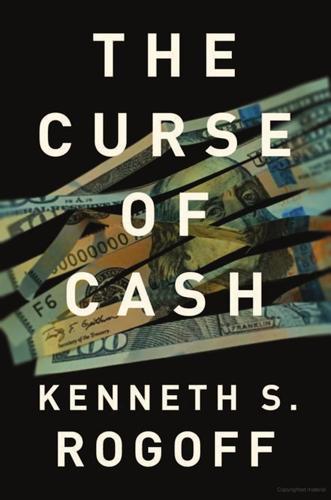
The Curse of Cash
by
Kenneth S Rogoff
Published 29 Aug 2016
China is not listed on the table, because the available dataset does not go back far enough, but in recent years, its monetary seigniorage on paper currency has averaged 0.5% of GDP a year, in the middle between the United States and Eurozone rates.5 Most countries’ seigniorage profits in recent years have almost certainly been exaggerated by the extremely low level of interest rates. The US number will likely drop to a steady-state number closer to 0.3% of GDP when interest rates normalize, and then only after an adjustment period when seigniorage will be low or even negative as people adjust their portfolios out of cash and into interest-bearing assets. The reasons for high seigniorage revenues in Russia are different: the government collects a high tax rate due to high inflation, on a large monetary base, thanks to a strong tradition of using cash in a very corrupt system.
…
Hence the profit from currency printing, measured in this way, is negative.6 Indeed, the Riksbank has already rightly started to discuss why in the long run a central bank should be focused on the health of the overall economy and not on its profit-and-loss statement.7 Sweden was relatively unique in this experience in the aftermath of the financial crisis of 2008, but as mentioned above, it is easy to imagine demand temporarily shrinking elsewhere when interest rate normalization begins, in which case other central banks may experience the same phenomenon. Note that the Swedish central bank would still be making money over most of this period using the opportunity cost definition of seigniorage. We return to the Swedish experience in Box 7.1 of chapter 7. Seigniorage revenues have been relatively modest as a share of GDP for many decades. It is true that in the high-inflation 1970s, seigniorage revenues from paper currency were notably higher for some European countries. For example, between 1974 and 1978, seigniorage revenues from currency (outside banks) ranged from 2.2% to 2.7% annually for Greece, and from 1.1% to 1.4% annually for Italy.8 But given the advent of alternative payment media, including credit and debit cards, levels this high are unlikely to be seen again in most advanced countries absent a brief spike from a large burst of unanticipated inflation.
…
True, these profits are likely flattered by the extremely low level of interest rates that have prevailed after the crisis,2 but even before policy interest rates collapsed to zero, the US take was still averaging 0.25% of GDP. (This calculation does not include seigniorage from electronic bank reserves, which of course should increase after paper currency is phased out. The government’s profit will depend on a variety of regulatory factors, such as the minimum level of reserves that banks will be forced to hold against deposits and what kind of interest rate the central bank pays on these.) MEASURES OF SEIGNIORAGE Importantly, there are two ways to think of seigniorage in a modern context, and both matter if one is contemplating scaling back the paper currency business.
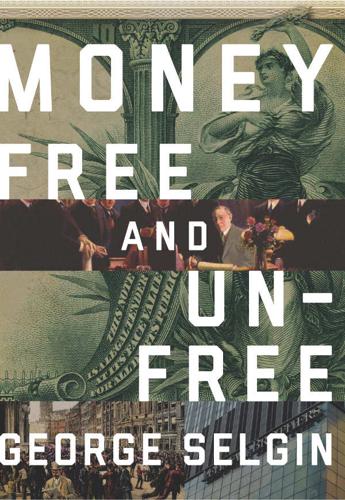
Money Free and Unfree
by
George A. Selgin
Published 14 Jun 2017
For the most part, the literature treats the base-money expansion rate (or the associated price inflation rate) as the government’s choice variable, taking monetary institutions as given. The focus lies on the rate that maximizes seigniorage, or alternatively minimizes the deadweight burden of taxation subject to a revenue constraint. In contrast, we inquire here into what sorts of monetary institutions enhance seigniorage. WHY COLLECT SEIGNIORAGE AT ALL? Several features make seigniorage an attractive option for raising revenue. First, a tax on money balances might be consistent with the Ramsey rule for minimizing the deadweight burden of raising a given amount of overall government revenue.
…
In modern times, especially, the governments of industrial democracies do not continuously act to maximize seigniorage: inflation rates would be much higher if they did. Yet monetary institutions capable of extracting maximum seigniorage from the public have emerged and have persisted. Indeed, the single most effective means for extracting seigniorage—monopoly issue of fiat money—became a permanent feature of monetary systems only during the 20th century. Our explanation for the gradual and uneven development of seigniorage-enhancing monetary institutions consists of three parts. The first is that government monetary institutions represent to a large extent piecemeal and opportunistic modifications of private-market developments, including the growth of banking and substitution of paper notes and checking accounts for gold and silver coins.
…
California likewise remained on a gold coin standard during the American Civil War, accepting “greenback dollars” only at a discount, and thus remained immune from seigniorage taxation through the issue of greenbacks. The second part is that governments, and democratic ones especially, are most anxious to obtain seigniorage revenues, and to alter monetary arrangements in ways that generate more seigniorage, during fiscal emergencies, especially wars. Such emergencies act as fiscal catalysts for seigniorage-enhancing innovations that public resistance might otherwise preclude. Thus, the fiscal hypothesis explains the observation that the move from commodity to fiat money typically occurred in steps corresponding to fiscal emergencies.18 The first step away from the gold or silver standard in many countries, as already noted, was the establishment of a government-sponsored bank.
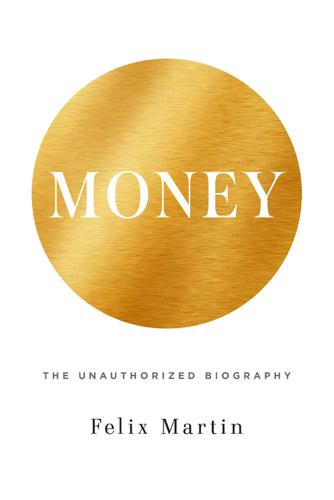
Money: The Unauthorized Biography
by
Felix Martin
Published 5 Jun 2013
In exchange for the benefit of using the sovereign money, the community should bear both the costs of minting and a modest seigniorage, so that the sovereign could continue to enjoy “a noble and honourable estate, as becomes princely magnificence or royal majesty.”27 Yet Oresme was aware that this proposed monetary reform begged a further question. Eliminating—or at least strictly regulating—seigniorage would certainly reduce the sovereign’s room for discretion in the management of money. But if the sovereign’s choice of the level of seigniorage was not to determine the quantity of money in circulation, what should? In theory, there was a simple answer to this question.
…
This vulnerability was more than a theoretical risk. Medieval sovereigns had few ways of raising revenue apart from the proceeds of their personal domains: levying direct or indirect taxes was far beyond most feudal administrative capabilities. Seigniorage was therefore a uniquely attractive and uniquely feasible source of income—and medieval sovereigns happily indulged in it. Under normal circumstances, when seigniorage was levied only on the gradual increase in the coinage supply demanded by a growing monetary economy, the revenues were relatively modest. But when the need arose, a sovereign could raise enormous sums by crying down or even demonetising altogether the current issue of the coinage and calling it in for re-minting off a debased footing.
…
The first was the emergence of a class of individuals and institutions whose wealth was held, and whose business transacted, in money—a politically powerful “money interest” beyond the sovereign’s court. The second was the growing addiction of sovereigns to the fiscal miracle of the seigniorage—a miracle which grew in proportion with the increasing use of money. The more activities were monetised, and the more people were drawn into the money economy, the larger the tax base on which seigniorage was levied. As sovereigns were to discover, this apparently magical source of fiscal financing did in fact have limits. They were not technical, however, but political. At some point, the new money interest was bound to assert itself against the sovereign’s perceived excesses.
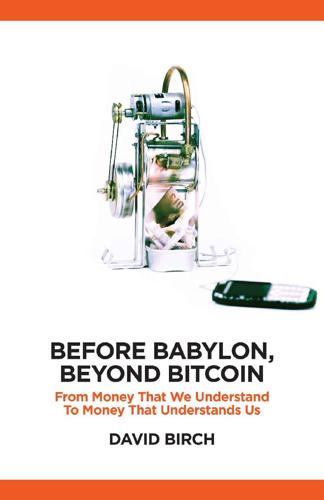
Before Babylon, Beyond Bitcoin: From Money That We Understand to Money That Understands Us (Perspectives)
by
David Birch
Published 14 Jun 2017
Cash has a strong hand when it comes to demographics but we can still trump it if we need to provide payment systems that deliver privacy (not anonymity) so that we can provide better alternatives to cash for people who live in the margins. They deserve better than cash. Seigniorage Cashlessness would mean central banks and governments losing seigniorage revenue. This is true, and the amounts of money involved could be non-trivial unless there was offsetting through a significant increase in the demand for the other components of the monetary base – a point I will cover in more detail in Part III. For instance, required reserves that pay less than the interest rate on non-monetary financial instruments would be a source of seigniorage, and if excess reserves have some material non-pecuniary convenience yield, the central bank could even make profits on excess reserves that it held.
…
Incidentally, given some of the discussion around the use of high-value banknotes for illegal activities, it is interesting to note (see table 3) that the United States earns far more in the seigniorage on its $100 bill than other countries earn from their highest-value note because such a high proportion of US currency is held in stashes and hoards outside of the country. Seigniorage from large notes. (Source: Sands (2016).) Country Biggest banknote Seigniorage ($ billion) % GDP (basis points) UK £50 00.1 01 Eurozone €500 01.9 02 US $100 23.6 14 Japan ¥1,000 02.0 05 Switzerland SFr 1,000 00.1 02 Privacy The abolition of currency would inevitably be associated with a loss of privacy and create risks of excessive intrusion by the government (and other would-be inspectors).
…
The existence of risk-free digital currency in the United Kingdom could plausibly lead to an inflow of funds from foreign banks into sterling digital cash, and that could in turn push up exchange rates. To recapture a portion of seigniorage. As discussed earlier, I think that the seigniorage argument is not terribly persuasive one way or the other. It is plausible, though, that the Bank of England might roughly double its seigniorage revenue if most people switch most of their spending from bank accounts to digital cash. To create alternative finance. Separating the creation of money from bank loans might mean a reduction in lending, which would have implications for the economy.
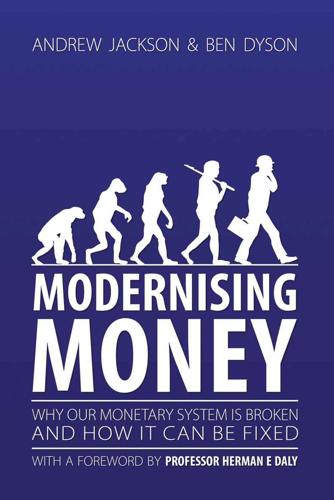
Modernising Money: Why Our Monetary System Is Broken and How It Can Be Fixed
by
Andrew Jackson (economist)
and
Ben Dyson (economist)
Published 15 Nov 2012
Reclaiming seigniorage on notes & electronic money Post-reform, the state will earn the seigniorage on the creation of electronic money. The cost of production of electronic money is practically zero, meaning that the seigniorage is effectively 100% of the face value. Strictly the only costs of the production of electronic money would be paying an official at the Bank of England to increase the balance of the Central Government Account, plus a couple of other officials (probably including the Governor) to validate the process and enter necessary passwords. This reform reclaims the seigniorage on the creation of money from commercial banks.
…
In addition, any attempt by the public to pay down its debts will result in a shrinking of the money supply, usually leading to recession and making it difficult to continue reducing debt. The state currently earns a profit, known as seigniorage, from the creation of bank notes. However, because it has left the creation of electronic money in the hands of the banking sector, it is the banks that earn a form of seigniorage on 97% of the money supply. This is a significant and hidden subsidy to the banking sector, and the loss of this seigniorage requires that higher taxes are levied on the population. The instability caused by the monetary system harms the environment. The burden of servicing an inflated level of debt creates a drive for constant growth, even when that growth is harmful to the environment and has limited social benefit.
…
Within the existing system in the US, coins are manufactured by the US Mint, which sells the coins at face value to the Federal Reserves, who in turn sells them at face value to commercial banks. The profit on the creation of coins,1 which is the difference between the cost of manufacture and the face value, is known as seigniorage, as described in the US Mint’s annual report: “Seigniorage equals the face value of newly minted coins less the cost of production (which includes the cost of metal, manufacturing, and transportation). Seigniorage adds to the government’s cash balance, but unlike the payment of taxes or other receipts, it does not involve a transfer of financial assets from the public. Instead, it arises from the exercise of the government’s sovereign power to create money and the public’s desire to hold financial assets in the form of coins.”
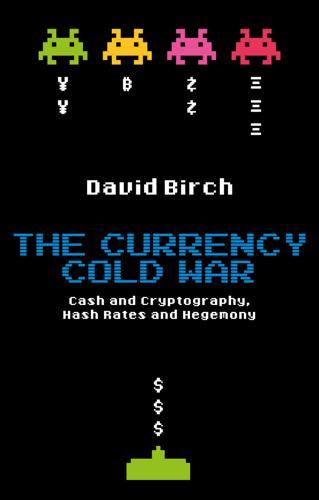
The Currency Cold War: Cash and Cryptography, Hash Rates and Hegemony
by
David G. W. Birch
Published 14 Apr 2020
As the Brookings Institution puts it (Klein 2020): How is it that our government is unable to directly pay such a large share of the American people during a time of crisis without waiting over a month to send a paper check? Seigniorage A digital currency could allow a central bank to recapture a portion of seigniorage. As I mentioned earlier, seigniorage is the income earned on currency issue. A £50 note does not cost £50 to make, so if £50 notes are replaced by digital currency, and the banks stop buying them because people stop using them, the Bank of England’s profits would tumble. We will return to this point when we discuss currency boards later on. Calculations in the United Kingdom show that the Bank of England might roughly double its seigniorage revenue if most people switched most of their spending from bank accounts to digital cash.
…
When a currency board is based on a foreign currency, using its digital currency is much like using that foreign currency directly for domestic transactions, except that it captures for domestic benefit the seigniorage that would otherwise accrue to the foreign issuer. This is in contrast to the dollarization just discussed, or the permeation of economies where it is the US dollar that circulates. If there were a digital US dollar, it would perform a similar function in online transactions, so the seigniorage would continue to flow to the United States. Thus, in the case of a developing country with an unstable currency, that country would obtain the benefits of dollarization without ceding seigniorage, which can be substantial. Studies vary, but the Federal Reserve estimates that some two-thirds of US currency circulates outside of America and is unlikely to ever return.
…
These can be labelled as innovation, inclusion and interest along with stability, seigniorage and substitutes. I will use this convenient breakdown for a discussion of these benefits, although, to be clear, I am not assuming that digital currency will be provided by a central bank. Table 6. Benefits of a digital currency. INNOVATION New and better payment systems STABILITY Reduced risk in transactions INCLUSION Products and services for everyone SEIGNIORAGE Profits for the nation, not for the banks INTEREST Interest rates as an economic management tool SUBSTITUTES New financial instruments for the new economy Let us take a look at each of these benefit categories in a little more detail, adding perspectives from the ECB, to try to understand whether the benefits are real and how important they might be (Bindseil 2020).

The City
by
Tony Norfield
This is an important reduction of commercial costs and risks for US international businesses. Paper money notes cost a few cents each to produce but have a much higher nominal face value of $10, $20 or $100, etc. Governments that issue their own national currency can therefore gain from printing these notes, something called ‘seigniorage’, as long as it does not destabilise the monetary system. For powerful countries, seigniorage is also international. This occurs when the national currency is circulated in other countries and held as a cash balance, so is not exchanged for the goods and services of the issuing country. If US dollars enter circulation in another country through a cash payment for its exports, then the US has exchanged its bits of green paper for the other country’s resources.
…
In 2010, British banks withdrew the high-value 500 euro note from circulation after the Serious Organised Crime Agency estimated that 90 per cent of them were not being used legitimately.11 When crossing borders, it is possible to stash a serious sum of euros undetected in your clothes: €20,000 in €500 notes would take up less space than a thin bar of chocolate – much less than a similarly valued pile of $100 bills, the highest denomination note currently issued by the US.12 I have found no estimates of foreign seigniorage for the UK, Japan or Switzerland, the other countries of relevance. The UK’s figures will have declined with the dissolution of the Sterling Area in the early 1970s, and since sterling has a very much smaller role in foreign payments than the US dollar, the seigniorage amounts are probably negligible in relation to UK GDP.13 This is not contradicted by the UK’s major financial role in the world, since that is not really based upon sterling.
…
However, other big UK corporations, such as Vodafone, BAE Systems and GlaxoSmithKline, report in terms of sterling. 4European Commission, One Currency for One Europe: The Road to the Euro, 2007, p. 17, at ec.europa.eu. 5Linda Goldberg and Cedric Tille, ‘The International Role of the Dollar and Trade Balance Adjustment’, Occasional Paper, No. 71, 2006, Group of 30, Table 1, p. 15. 6European Central Bank, The International Role of the Euro, Table A11, p. 77, July 2014. 7IMF, Annual Report on Exchange Arrangements and Exchange Restrictions, International Monetary Fund, October 2012, Table 1, p. 5, at imf.org. 8Federal Reserve Bank of New York, ‘How Currency Gets into Circulation’, June 2008, at newyorkfed.org. 9Bo Nielsen and Adriana Brasileiro, ‘Supermodel Bündchen Joins Hedge Funds Dumping Dollars’, Bloomberg News, 5 November 2007. 10ECB, The International Role of the Euro, January 2005, p. 58; ECB, The International Role of the Euro, July 2014, p. 23. 11‘500 Euro Notes Withdrawn Over Organised Crime Fears’, Telegraph, 13 May 2010. 12A note to the reader, and to border officials: I have not actually done this, but curiosity led me to check the measurements. 13The Bank of England reports the net income from assets bought with its issuance of sterling banknotes, but this is not the type of seigniorage used here, and neither does it relate to the international dimension (BoE, Annual Report 2012, p. 97). 14However, holding a bank account (in Swiss francs or Japanese yen, for example) outside the relevant country does not mean that any notes actually leave the national territory and are physically held in the foreign country. Modern seigniorage refers to individuals and companies holding currency notes. 15The term originates from French government criticism of the dollar’s role in the 1960s, and was coined by de Gaulle’s finance minister, Valéry Giscard d’Estaing, who used it to refer to the US ability to fund its current account deficit by issuing dollars at low rates of interest (Eichengreen, Exorbitant Privilege, p. 4). 16In Exorbitant Privilege Eichengreen mainly refers to the former while Maurizio Michael Habib focuses on the latter in his ‘Excess Returns on Net Foreign Assets: The Exorbitant Privilege from a Global Perspective’, ECB Working Paper Series, No. 1158, February 2010. 17Matthew Higgins and Thomas Klitgaard, ‘Reserve Accumulation: Implications for Global Capital Flows and Financial Markets’, Current Issues in Economics and Finance, Vol. 10, No. 10, September/October 2004. 18US current account data are from the regular reports of the Bureau of Economic Analysis.
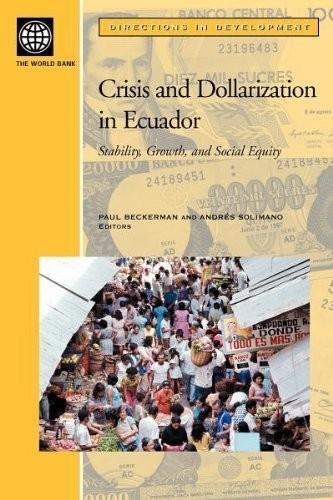
Crisis and Dollarization in Ecuador: Stability, Growth, and Social Equity
by
Paul Ely Beckerman
and
Andrés Solimano
Published 30 Apr 2002
Of course, the degree of integration in goods, capital, and labor markets in the EU is far higher than in the CAN (or MERCOSUR).13 Still, the development of practices of mutual consultation in monetary and exchange-rate matters among member countries is worth pursuing. Seigniorage and Lender of Last Resort A classic argument in the case for national money14 is that, by giving up the use of national money and adopting a foreign currency, a country loses a source of revenue, given by the difference between the real command of resources that the creation of money entails and the low cost of producing (paper) money. This difference is called seigniorage. For ranges of low to moderate inflation and with “normal” demand for money, seigniorage can 10 CRISIS AND DOLLARIZATION IN ECUADOR represent several points of GDP.
…
For ranges of low to moderate inflation and with “normal” demand for money, seigniorage can 10 CRISIS AND DOLLARIZATION IN ECUADOR represent several points of GDP. By adopting the U.S. dollar as its national currency, Ecuador loses this source of revenue and transfers seigniorage to the Federal Reserve Bank of the United States. However, the quantitative importance of the loss of seigniorage in Ecuador is bound to be modest, as the economy was already highly demonetized and de-facto dollarized before the U.S. dollar was officially adopted. In any case, it should not be ruled out that in the future some arrangement could be made for the seigniorage to be shared with Ecuador. Another feature of a dollarized system is the apparent absence of a lender of last resort.
…
U.S. interest rates and U.S. business cycles explain half the variance of real exchange-rate changes and accumulation of international reserves (Calvo and Reinhart 2000). It seems reasonable enough to conclude that U.S. economic influence operates under any exchange-rate regime. Another presumable disadvantage of dollarization is the loss of seigniorage. Having a local currency allows the central bank to secure seigniorage gains, whereas full dollarization leaves the seigniorage gains in the hands of the U.S. Federal Reserve.2 The appropriate comparison, however, would be not with an alternative theoretical system where the central bank holds no international reserves, but with a more realistic system in which the central bank maintains a large international-reserve stock.

Where Does Money Come From?: A Guide to the UK Monetary & Banking System
by
Josh Ryan-Collins
,
Tony Greenham
,
Richard Werner
and
Andrew Jackson
Published 14 Apr 2012
The only way in which the money supply can be increased by the Government or central bank is through the purchase of assets from the non-bank private sector, or, in the case of the Government, by borrowing from the commercial banks in the form of loan contracts.* Box 8: Seigniorage, cash and bank’s ‘special profits’ The Bank of England sells bank notes to commercial banks. They sell these notes at face value (a £10 note sells for £10), yet the cost of printing a £10 note is just a few pennies. The difference between the face value and cost of production gives the Bank of England a substantial profit. This profit from the creation of money is known as ‘seigniorage’, and is paid over to the Treasury, where it can be used to fund government spending or to reduce taxation. Between 2000 and 2009 this seigniorage amounted to nearly £18 billion.14 The growth of digital commercial bank money, vis-à-vis government issued cash, can be seen to have the effect of significantly reducing this seigniorage profit to the Government proportionate to the total money supply.15 Commercial banks do not generate seigniorage themselves as they issue credit which will, at some point, be repaid in full.
…
Between 2000 and 2009 this seigniorage amounted to nearly £18 billion.14 The growth of digital commercial bank money, vis-à-vis government issued cash, can be seen to have the effect of significantly reducing this seigniorage profit to the Government proportionate to the total money supply.15 Commercial banks do not generate seigniorage themselves as they issue credit which will, at some point, be repaid in full. However, as we discussed in Section 3.4 on Fractional Reserve Banking, commercial banks can be seen to generate ‘special profits’ from their power to issue money in the form of credit through the interest charged upon loans and used overdraft facilities.
…
Other payment versus payment settlement methods Index LIST OF EXPLANATORY BOXES Box 1: Retail, commercial, wholesale and investment bank Box 2: Building societies, credit unions and money creation Box 3: Bonds, securities and gilts Box 4: Wholesale money markets Box 5: Double-entry bookkeeping and T-accounts Box 6: Money as information – electronic money in the Bank of England Box 7: What is LIBOR and how does it relate to the Bank of England policy rate? Box 8: Seigniorage, cash and bank’s ‘special profits’ Box 9: Real time gross settlement (RTGS) Box 10: If banks can create money, how do they go bust? Explaining insolvency and illiquidity Box 11: The ‘shadow banking’ system Box 12: The Quantity Theory of Credit Box 13: Could the Government directly create money itself?
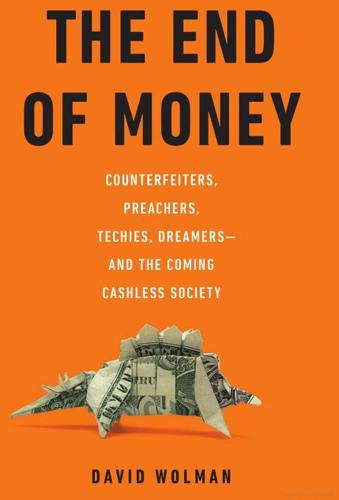
The End of Money: Counterfeiters, Preachers, Techies, Dreamers--And the Coming Cashless Society
by
David Wolman
Published 14 Feb 2012
Mint, for example, has already earned the Federal Reserve an estimated $4.6 billion in seigniorage.24 In total, the Fed will have earned about $70 billion in 2010 and 2011 by way of providing you, me, and the rest of the greenback-using world with physical money.25 (The Fed also earns seigniorage when it issues electronic money, but that’s a more convoluted form of earning over time, compared with straight-shot profit, which is like any business that sells its product for more than it costs to produce. Then again, having a legal monopoly makes this very much unlike other businesses.) Conspiracy theorists in the United States tend to obsess over seigniorage and the Federal Reserve’s semi-private nature, claiming that the Fed is a malevolent secret society—think Knights Templar meets the Council on Foreign Relations.
…
“No one ever thinks about this, but the answer is that the bank has bought government securities with it. That cash is really a stealth tax.” Come again? Birch is griping about the weirdest and most technical aspect of national currencies. Everyone wants to make a profit, and the institutions that manufacture and issue the money are no different. The key is something called seigniorage. The opaqueness of the term itself bespeaks the “secret incantation” of central banks and “transactions so powerful and frightening they seem[ed] to lie beyond common understanding,” as William Greider put it in Secrets of the Temple: How the Federal Reserve Runs the Country.23 All it is, though, is profit pocketed by central banks and their governments, earned for providing us with currency with which to go about our business.
…
Conspiracy theorists in the United States tend to obsess over seigniorage and the Federal Reserve’s semi-private nature, claiming that the Fed is a malevolent secret society—think Knights Templar meets the Council on Foreign Relations. These evildoers, say the theorists, use their power and wealth to manipulate world governments to their benefit. The more boring fate of seigniorage is that the Fed transfers this profit to the Treasury at year’s end. Nevertheless, Birch’s notion of the stealth tax isn’t wrong. Currency issued by the central bank is an interest-free loan from the people to the bank. It depends on your politics, though, whether this profit constitutes the government ripping off the people, or the government of the people earning revenue to spend on its citizens.
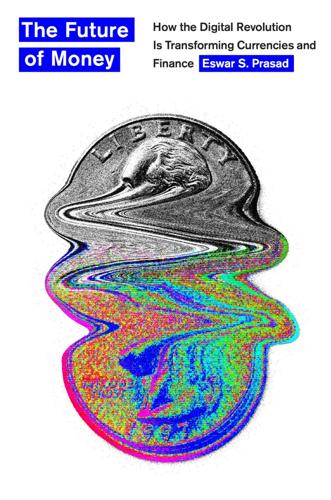
The Future of Money: How the Digital Revolution Is Transforming Currencies and Finance
by
Eswar S. Prasad
Published 27 Sep 2021
Switching from physical banknotes to digital currency with lower production and distribution costs would therefore increase seigniorage revenues only marginally. Thus, the implications of a CBDC for seigniorage revenues depend more on its impact on the demand for central bank money and on interest rates than on the costs of producing it. Demand for central bank–issued currency, in either physical or digital form, could certainly be lower if it were to be displaced as a medium of exchange by private payment systems. But, in any event, seigniorage is unlikely to play much of a role in central banks’ considerations regarding CBDC issuance. After all, reported seigniorage revenues are small for most central banks, even those that issue reserve currencies.
…
After all, reported seigniorage revenues are small for most central banks, even those that issue reserve currencies. For instance, the European Central Bank’s (ECB) seigniorage revenues were negligible in 2019 because it accounts for only about 8 percent of total euro banknotes (the remainder are issued by national central banks of eurozone countries), and interest rates in core eurozone countries were very low. The Bank of Canada estimates that its seigniorage revenues cover its operating expenses and allow it to transfer about 1 billion Canadian dollars to the government each year. The Bank of England reports that its net seigniorage income in fiscal year 2020 was 555 million British pounds. All of these amounts would be only slightly larger if the marginal costs of issuing central bank currency were close to zero on account of its being in digital form.
…
As discussed elsewhere in the report, that income was essentially zero in 2019. The Bank of Canada’s calculations are reported in Understanding Seigniorage, Bank of Canada, May 6, 2020, https://www.bankofcanada.ca/2020/05/seigniorage/ and in its annual report: Bank of Canada, Annual Report 2019, December 2019, https://www.bankofcanada.ca/2020/05/annual-report-2019/. The Bank of England annual report for the period running from March 2019 through February 2020 is available here (see p. 35 for net seigniorage figures for the current and previous years): Bank of England Annual Report and Accounts 1 March 2019 to 29 February 2020, https://www.bankofengland.co.uk/-/media/boe/files/annual-report/2020/boe-2020.pdf.

The Blockchain Alternative: Rethinking Macroeconomic Policy and Economic Theory
by
Kariappa Bheemaiah
Published 26 Feb 2017
In light of these practices, the obvious question is, why are central banks still printing cash even though they are aware of the benefits it provides to malicious and ill-intentioned members of society? The answer in a word is Seigniorage. Seigniorage is the difference between the value of money and the cost to produce it. When commodity money was used, Seigniorage was the difference between the face value of the minted coins and the actual market value of the metal they contained. If the Seigniorage was positive, then the government made a revenue that was essentially a profit. However, with fiat money, the same formula does not apply. With a fiat money system, Seigniorage revenue is three-fold. First, revenue is obtained from the physical production of money.
…
Second, when commercial banks require cash, they purchase it from the central bank via the reserves that they need to hold at the central bank. This is turn is a source of revenue to the central bank and the Seigniorage is earned from the reduction in the central bank’s interest costs, as interest is payable on reserves but not on cash. Third, commercial banks can also purchase cash by entering a repo agreement with the central bank. In exchange for cash, the central bank buys securities from the commercial bank. But the commercial bank has to buy back the securities at a later date (hence a repo agreement). Seigniorage is thus made by the central bank during the repurchase phase of the repo agreement (Dyson and Hodgson, 2016).
…
Some other points worth mentioning include: The Chicago Plan creates longer-term output gains: Lower debt levels in the economy cause investors to demand lower real interest rates. This makes borrowing money less risky and can help in spurring investment. As the government is also capable of gaining a higher Seigniorage income, it can offset distortionary tax rates that are paid by citizens, giving them more income to save or invest. Finally, as money can now be created debt-free, there is a reduced need to monitor the creation of those loans whose primary function was to create an adequate money supply. This in turn leads to lower credit monitoring costs. --------------------------------------------------------------------------------------- *(It should be remembered in viewing this plan that money is not looked at as a debt instrument issued by the government (as is currently done in the fractional banking system).
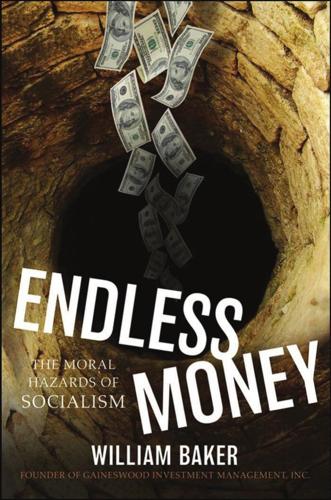
Endless Money: The Moral Hazards of Socialism
by
William Baker
and
Addison Wiggin
Published 2 Nov 2009
It added wealth to the colonies and undermined the monetary base of Britain, essentially making the colonists legal counterfeiters. It also underscores that government has two means of financing: one is to tithe the income of its citizenry; the other is to tax the value of circulating medium simply by printing money. The latter benefit to government is known as “seigniorage,” and it accrues directly to the holder of the press. Perhaps on account of living through such an extreme episode by necessity, or perhaps from its repeat in France during that country’s revolution (1789-1797), blatant issuance of paper money came to an end. The Founding Fathers expressly wrote into the U.S.
…
In such an arrangement socialism flourishes, because there is no perceived cost to those who hold wealth. In actuality, the difference between the low single digit inflation of modern fiat currencies and the natural deflation that would accrue from productivity gains, and from the integration of billions of lowwage laborers into the world economy represents seigniorage transferred to the political beneficiaries of socialized credit. It is a staggeringly large number annually. Taken to the extreme, bank reserve requirements could be set near zero to permit infinite expansion of the money stock. The panic of 2008 may have this very characteristic. The experience of the early 19th century provides some evidence of Rothbard’s observation of how strong the profit opportunity was when the United States first witnessed fractional reserve banking.
…
Yet losses then are estimated at only 2 percent, far less than the inflation to which the government subjected the people once the Act was legislated and the need to finance the Civil War became pressing.33 By 1903 the weakened state of silver globally provided the perfect opportunity for Britain and the United States to approach friendly countries with an opportunity to base their national currencies upon the pound or the dollar, respectively, which were grounded upon gold and could serve as a reserve base underneath foreign money supplies instead of silver. Seigniorage as well as control over financial affairs would accrue to the issuer of the reserve currency, the United States or Britain, and their client states would be subservient. The idea was to replace a genuine gold standard, in which each country (or, domestically, each bank) maintains its reserves in gold, by a pseudo-gold standard in which the central bank of the client country maintains its reserves in some key or base currency, say pounds or dollars . . . during the 1920s, most countries 56 ENDLESS MONEY maintained their reserves in pounds, and only Britain purported to redeem pounds in gold.
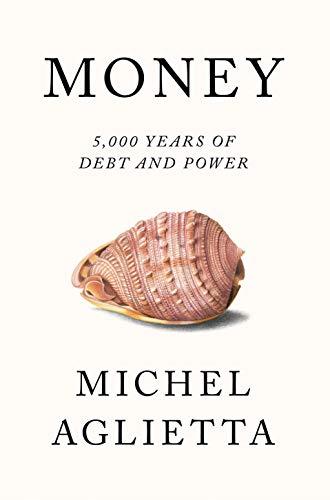
Money: 5,000 Years of Debt and Power
by
Michel Aglietta
Published 23 Oct 2018
It is always and everywhere a reciprocal debt between society as a whole – as represented by the payment system – and its members. Table 1.2 Making metal into money Creation of metal money without seigniorage Metal holder Mint Unminted metal Assets in metal Minted money −100 + 100 +100 Minted money +100 Creation of metal money with seigniorage Metal holder Mint Unminted metal Assets in metal Minted money −100 + 100 +100 Minted money Seigniorage +95 +5 Tax: +5 What determines individuals’ capacity to act on the market is therefore the amount of capital used as collateral and (or) its liquidity (in the case of a negotiable financial security).
…
The monopoly on issuing money reinforced the kingdom’s collective identity and centralised its capacity to acquire resources to finance the mercenaries called on to defend the kingdom, thanks to seigniorage. As we described in our accounting analysis in the first chapter (Table 1.2), the minting workshop collected a fiscal debt for state accounts among those buying money in exchange for metal. The state became the counterparty of all those who held money, on whom it imposed a tax levy. Beyond those who sought metal, the other contributors were merchant intermediaries of foreign trade. When they received money in crude metals or foreign monies, they had to convert it into legal tender in order to spend it in the kingdom itself. Seigniorage thus represented the primacy of legal tender over crude metal within the political space where it was established.
…
There was an attempt to gather resources through monetary manipulation: the king had the power to change the legal price of coins without parliamentary control, nor any possibility of being challenged before the courts. In 1690, the state sought to increase its seigniorage on coins. The Hôtel des Monnaies withdrew the coins in circulation and minted new coins at a value in livres tournois at x level higher than the coins’ former value. It set them in circulation at the price y < x and kept x – y per unit of silver weight, which it transferred to the state. Seigniorage would supposedly decrease consistently over time, until it reached the level of the livre tournois’s old metal value. But these operations had to be repeated on a systematic basis.
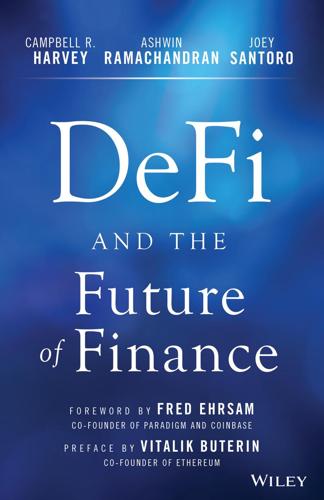
DeFi and the Future of Finance
by
Campbell R. Harvey
,
Ashwin Ramachandran
,
Joey Santoro
,
Vitalik Buterin
and
Fred Ehrsam
Published 23 Aug 2021
In some cases like DAI, a debt ceiling further limits the supply growth. The last and perhaps most interesting class of stablecoins are non-collateralized. Not backed by any underlying asset and using algorithmic expansion and supply contraction to shift the price to the peg, they often employ a seigniorage model where the token holders in the platform receive the increase in supply when demand increases. When demand decreases and the price slips below the peg, these platforms issue bonds of some form, which entitle the holder to future expansionary supply before the token holders receive their share.
…
More common and useful is the ability to intentionally burn tokens as a part of the smart contract design. Here are some example use cases for burning tokens algorithmically: Represent exiting of a pool and redemption of underlying (common in equity tokens like cTokens for Compound that are discussed in Chapter 6) Increase scarcity to drive the price up (e.g., AAVE in Chapter 6, Seigniorage Stablecoin models like Basis/ESD) Penalize bad acting Mint: Increase Supply The flip side of burning is minting, which increases the number of tokens in circulation. Contrary to burning, there is no mechanism for accidentally or manually minting tokens. Any mint mechanics have to be directly encoded into the smart contract mechanism.
…
There are many use cases for minting as it can incentivize a wider range of user behavior. Here are some examples: Represent entering a pool and acquiring corresponding ownership share (common in equity tokens like cTokens for Compound) Decrease scarcity (increase supply) to drive the price downward (seigniorage Stablecoin models like Basis/ESD) Reward user behavior Rewarding user behavior with increases in supply (inflationary rewards) has become a common practice to encourage actions such as supplying liquidity or using a particular platform. Consequently, many users engage in yield farming, taking actions to seek the highest possible rewards.

The Age of Cryptocurrency: How Bitcoin and Digital Money Are Challenging the Global Economic Order
by
Paul Vigna
and
Michael J. Casey
Published 27 Jan 2015
It gave the coin authenticity but also functioned as a kind of royal branding, an advertisement of the omnipresence of the realm. We are reminded that money and power are inseparable. The sovereign’s capacity to issue money afforded one specific benefit: the creation of seigniorage, the ability to profit directly from the issuance of currency. These days, seigniorage arises because of the interest-free loan that a government obtains by printing money on comparatively worthless pieces of paper. But when currencies were associated with particular weights of precious metals, monarchs exploited this power through more overt methods.
…
The ten-minute gap is somewhat arbitrary, but by choosing an interval and programming the software to stick to that fixed schedule, he could arrange the currency-issuance schedule to be consistent over a 130-year period. In monetary-theory terms, the payout is seigniorage, the profit that a currency issuer—be it a sovereign, a monetary authority, or in this case a winning bitcoin miner—derives from the privilege of minting the community’s money. The corollary is, this cost is borne by the rest of the community, since fresh supply depletes the market value and purchasing power of the existing currency. Seigniorage is unavoidable; someone has to be the first to own newly issued currency. The question is how to make it fair. Some cryptocurrency designers have created nonprofit foundations and charged them with distributing the coins based on certain criteria—to eligible charities, for example.
…
Some designers have given fixed allotments to people formally registered as belonging to a particular group, such as a national registry. But that creates the potential for fraud as people can set up more than one wallet per person, hiding behind the system’s anonymity, and get higher allotments for themselves. Some have created the coins and sold portions of them to the public—garnering the seigniorage for themselves, much like a government.* Often this strategy requires some elaborate maneuvers to keep the faith with the community, occasionally employing a “proof of burn” strategy, where the founders periodically transfer some of their coin holdings to a verifiably unusable wallet to maintain scarcity and bolster the value of everyone else’s coins.
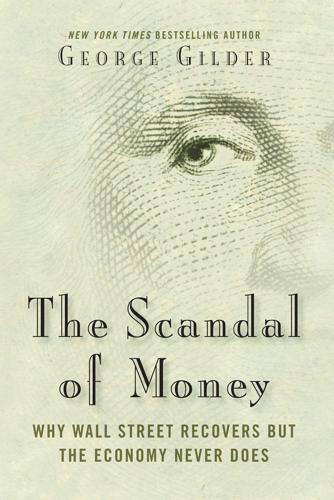
The Scandal of Money
by
George Gilder
Published 23 Feb 2016
Governments pushed real estate as a haven from dollar depreciation, turning the U.S. economy from an industrial powerhouse into a financial and consumption casino. With no global standard of value, currency trading became the world’s largest and most useless enterprise, accounting for more than a quadrillion dollars in transactions every year by 2015—a third of the GDP every day. It gobbled up the profits of what is called “seigniorage,” the gains from issuing money. These gains represent the difference between the coin’s cost of production and its value. The central banks and government Treasuries win most of these gains. But these quantitative changes also lavishly benefit any early borrowers or lenders of the government money who can act before related price changes propagate through the economy.
…
Since every currency has a central bank, the prevailing monetarism enables a different monetary policy in each nation or region. Separating national economies, this system favors currencies floating against one another, with their values reconciled by a global market of currency exchange. Thus, a global currency is “minted” by currency traders in a strange new form of seigniorage. Under the prevailing theory, money becomes a self-referential system ultimately controlled by each sovereign that issues currency. Sovereign moneys compete with one another in markets around the globe. By assuming that control over the money supply gives the government power to provide jobs and lower prices in each country, monetarism, like Keynesianism, not only invites but virtually requires a government monopoly on money.
…
Moreover, that work yields a volatile but steadily rising proportion of all banking profits. In other words, our current floating-rate system fails to cancel capital, technology, and learning. Instead capital, technology, entrepreneurial ingenuity, and government power together largely determine the earnings in the financial system. In a form of private seigniorage—the profits from creating money—the largest traders capture hundreds of billions of dollars or dollar equivalents every year from setting the measuring stick. Therefore, it is not a measuring stick at all but a speculative ocean of currencies that banks surf for profits. In what looks uncomfortably like a protection racket, the banks extract these profits as a kind of volatility tax on the companies that use them to hedge currencies.
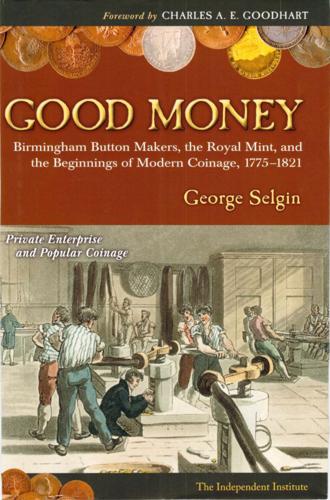
Good Money: Birmingham Button Makers, the Royal Mint, and the Beginnings of Modern Coinage, 1775-1821
by
George Anthony Selgin
Published 13 Jul 2008
STEAM, HOT AIR, AND SMALL CHANGE 10 287 -r------------------------------------...., 8 6 4 2 o .:;.~'o ~.:;.'v;)~.:;.<)~.:;.'v;)~.:;.<~ .:;.'v;)'+:>':;''o~ ':;''o'V':;''o~.:;.'0'0':;''o'+:>.:;.~~.:;.'\~.:;.~~.:;.~'o.:;.~'+:>.:;.,+:>~ .:;.,+:>'V.:;.,+:>~.:;.,+:>'0.:;.,+:>'+:>.:;.O;~ .:;.d)l;.:;.O;~.:;.~'o " -2 -4 -'- L_-..L Fig. 4. Implicit seigniorage rate on regal copper coin, 1749-1816. Seigniorage is calculated by subtracting the sum of the price of sheet copper (drawn from Grenfell 1814, app.) and a constant average coin. The situation with silver was no different. Rogers Ruding wrote at the end of the century (1799,35-36): [T] he counterfeiter has only to procure a die (the sinking of which is within the ability of any workman in steel), with a faint outline of part of a bust upon it, and with a reverse totally plain: With this mean instrument he may secure a profit of nearly thirty per cent. by coining shillings, even of standard silver.
…
The better the credit of the issuer, the wider the circulation, and the less need for intrinsic value of the money object. Selgin, I would guess, sees the almost universal provision of currency by the state as an unnecessary and undesirable consequence of coercion to protect a profitable monopoly (seigniorage). In contrast, I see the state's role in this respect as the almost inevitable consequence of the fact that the state is-admittedly in large part because of its coercive and tax powers-the most creditworthy institution in the country. Whichever of us may be correct, it makes no difference to the fact that this is an excellent and fascinating book.
…
The mint price of bullion is the nominal or "face" value of coins given in exchange for bullion brought to the mint, while the mint equivalent is the nominal value of coins actually made from the bullion. When coinage is gratuitous, as it was in Great Britain, the two values are equal. Otherwise, the mint price will fall short of the mint equivalent by the charge for coinage, which may include a profit to the mint or government. That profit is known as seigniorage, after the lords, or seigneurs, who exercised the right of coinage in medieval France. During the seventeenth and eighteenth centuries, the mint price (and mint equivalent) ofa troy pound (twelve ounces, each of 480 grains) of silver was sixtytwo shillings. As long as Great Britain's standard money units were understood as silver units (as they were for much of this period), for the Royal Mint to have made more than sixty-two shilling coins from one troy pound of silver would have been tantamount to redefining the pound sterling, the shilling, and the penny.
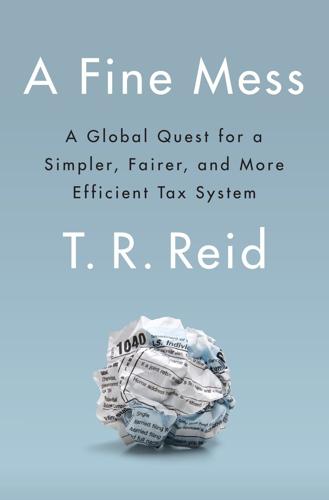
A Fine Mess
by
T. R. Reid
Published 13 Mar 2017
The problem here is inflation, which increases sharply as more and more money floods into the marketplace, with severe repercussions. A less damaging way to make money from printing money is the concept of “seigniorage,” which is the difference between the face value of a bill and the cost of printing it. The U.S. government spends about six cents for the paper and ink used to make a $10 bill, which means a seigniorage gain of $9.94 when a new $10 bill is put into circulation. The U.S. Mint says it earns something over $100 million each year this way. As long as a government doesn’t print so much money that it triggers inflation, seigniorage can be a small but steady contributor to revenues. Governments can also bring in money by borrowing.
…
., 10, 17, 19, 37, 96, 173, 193, 247 world’s highest, 18, 41, 111 See also value-added tax (VAT) Sanders, Bernie, 132, 138, 158, 172, 180, 184–85, 253 Sarkozy, Nicolas, 127, 133 savings, 9, 33, 36, 116, 128–29, 173–74, 181–82, 233, 241, 255 Scandinavia, 105 schools, 24–25, 29, 63, 117, 175, 237, 239 Schuchat, Frank, 139 Schwarzman, Stephen, 119, 138 Scott, Graham, 11, 60–63, 65 securities, 23, 84, 123, 160, 181–85, 255 Securities and Exchange Commission, 163, 181 seigniorage gain, 33 self-employed, the, 63, 223 Seligman, Edwin R. A., 45, 135 Serbia, 106, 110 single-rate tax. See flat-rate income tax Single Tax (Georgist), 173–76 sin tax, 37–39 Skadden, Arps firm, 154 Slemrod, Joel, 43, 238 Slovakia, 10, 15, 23, 106–13 Slovenia, 15, 94 slumps, economic, 37, 41–42, 51, 101, 103, 107, 113, 172, 233, 235, 238 Smith, Adam, 37–38, 44–45 Social Security, 103, 126 in flat-rate tax countries, 110–11, 114 in other nations, 133, 192, 221 in U.S., 17, 41–42, 63, 75, 79, 165, 173–74, 186, 234, 246 soda pop tax, 10, 38–39, 176–80, 185 South Africa, 240 South Korea, 14–15, 17, 19, 21, 24, 36, 77, 146, 181 Soviet Union, 94–95, 101–6, 109–11, 220.
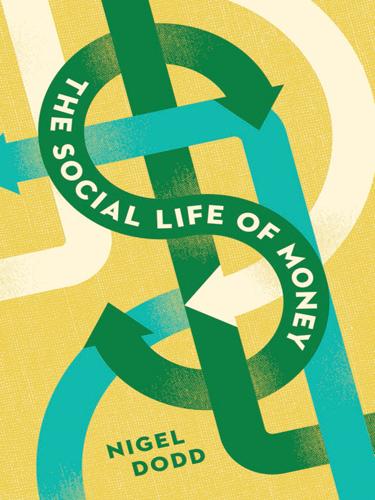
The Social Life of Money
by
Nigel Dodd
Published 14 May 2014
The classic expression of such interests, of course, is seigniorage, which used to be the difference between the value of money and what it cost to produce. Seigniorage was classically seen as a tax—economists called it an inflation tax—because it was usually the state (via its central bank) that produced the notes and coins in question. Today, however, the “tax” on the everyday use of money is paid not to the state but to the providers of the payment networks. These are the very providers—PayPal, Square, Google, and M-Pesa—whose primary attraction lies in the fact that they are not government. This phenomenon is the new, private, seigniorage.50 The expansion of mobile money has proceeded hand in hand with the development of increasingly sophisticated ways for private corporations to “mine value in the act of payment” (Maurer 2011: 10).
…
The increasingly private character of payment systems militates against this situation and explicitly encourages a form of profiteering from money’s mere use, which is arguably no more logical or ethically defensible than usury. Since the 2007–8 crisis, most public debate about the nature and purpose of the monetary and financial system has been preoccupied with debt. But the “new seigniorage” has all of the potential to be an equally corrosive feature of the world’s monetary landscape. The second key issue is connected to the first. It concerns the relationship between the two main payment networks I have been discussing here. At present, the two road systems meet in various ways, or in many instances not at all.
…
Bearers of local currency vouchers do not benefit from the same level of consumer protection as banknotes issued by either the Bank of England or the authorised commercial issuing banks in Scotland and Northern Ireland” (Naqvi and Southgate 2013: 1). 47 See http://www.prisonplanet.com/articles/april2004/040704bajabeachclub.htm and http://edition.cnn.com/2004/WORLD/europe/06/09/spain.club/index.html. 48 M is for mobile; pesa is Swahili for money. 49 https://squareup.com/wallet. 50 Although it is not exactly seigniorage, the term goes some way toward capturing the idea that this is essentially a fee that is charged for the mere use of money, like the opposite of demurrage. As Maurer points out, “We may need a better vocabulary for fees, rents, taxes, tribute—not everything, as the Islamic bankers remind us, is usury” (Maurer 2011: 11). 51 Payment service providers wield significant power in other ways, too, as exemplified by the involvement of Bank of America, VISA, MasterCard, PayPal and Western Union in the WikiLeaks case.
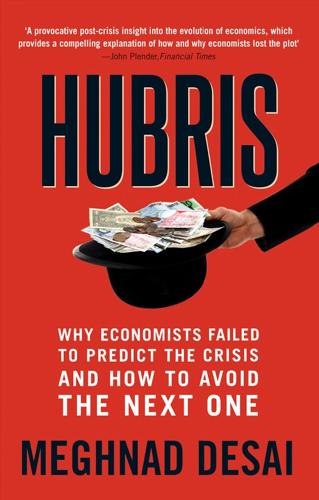
Hubris: Why Economists Failed to Predict the Crisis and How to Avoid the Next One
by
Meghnad Desai
Published 15 Feb 2015
Investors wanted to be able to move their assets from one currency to another quickly and cheaply. There were rich pickings here for the financial markets. Once fixed exchange rates were replaced by flexible exchange rates, the dollar became the sole anchor for the international monetary system. This gave enormous seigniorage privilege to the US. Every country wanted to hold dollars as reserves since dollars were universally acceptable in trade, and indeed all prices were quoted in dollar terms. This allowed the US to issue more dollars relative to its income than would be the case for other economies. This was the privilege that European nations could not enjoy and complained about.
…
(i), (ii) Rothschilds (i) Roubini, Nouriel (i) Royal Charter, grants of monopoly (i) rules of competition (i) Russia (i), (ii) Russian revolution (i), (ii) saltwater economists (i), (ii) Samuelson, Paul (i), (ii), (iii), (iv) “Analytical Aspects of an Anti–Inflation Policy” (with Robert Solow) (i) Say, Jean-Baptiste (i) Say’s Law (i), (ii) scarcity value (i) Scholes, Myron (i), (ii), (iii) Schumpeter, Joseph (i), (ii), (iii), (iv) The Theory of Economic Development (i) Schwartz, Anna, A Monetary History of the United States (with Milton Friedman) (i) Scottish Enlightenment (i) Second International (i) secular stagnation (i) securitization of mortgages (i) seigniorage privilege (i) self-interest (i) self-organizing society (i) self-sufficiency (i) service sector (i), (ii) servomechanism (i) shadow banking structure (i) shares (i) Sherman Act (i) Shiller, Robert (i), (ii) shocks (i), (ii), (iii) contagion (i) debt crises (i) political (i) see also oil shock short cycles (i) short-run rate of interest (i) Silesian weavers (i) single global currency (i) skills, types needed (i), (ii) slack (i) slavery, abolition of (i) Slutsky, Eugen (i), (ii), (iii) Smith, Adam (i), (ii), (iii), (iv), (v) the founding of the political economy (i) An Inquiry into the Nature and Causes of the Wealth of Nations (i), (ii) The Theory of Moral Sentiments (i), (ii) social science, founding (i) Socialist International (i) society regulation (i) self-organizing (i) Solow, Robert (i), (ii), (iii) “Analytical Aspects of an Anti–Inflation Policy” (with Paul Samuelson) (i) sovereign debt crises (i), (ii) Soviet Union, break up (i), (ii) speculation (i) speculative motive (i), (ii) stag-deflation (i) stagflation (i), (ii), (iii) Stalin, Joseph (i) static vision (i) statistics (i) development of (i) historical research (i) usefulness (i) sterling, as reserve currency (i) stochastic calculus (i) stock market crash, London (i) stock markets bull run (i) competition (i) computer technology (i) stock prices, randomness (i) Stockholm School (i) Stop-Go cycle (i) policy (i) Summers, Larry (i) surplus value (i) sustainable recovery, sources of (i) Sutcliffe, Robert (i), (ii) sweetwater economists (i), (ii) Sweezy, Paul (i) System of Natural Liberty (i) T bills (i), (ii), (iii) tatonnement (i) tax cut, US (i) technical progress, role of (i) technological innovations author’s experiences (i) displacement effect (i), (ii) and manufacturing location (i) see also computer technology technological shocks (i) telecommunications (i) Thailand, Crisis, 1997 (i) Thatcher, Margaret (i) theories, need for validation (i) theory of economic behavior of the household (i) Thornton, Henry (i) time, role of (i) time series data (i) Tinbergen, Jan (i) Tobin, James (i) Tobin tax (i) total money supply, and prices (i) total output, heterogeneity (i) trade doctrine see under Ricardo trade-off, unemployment and inflation (i) trade surpluses, banking (i) trade unions effect on money wage (i) as harmful (i) power (i) rise of (i) strengthening (i) weakening (i) transactions motive (i) transmission mechanism (i) Troubled Assets Recovery Program (TARP) (i) true costs of production (i) Truman, Harry (i) trusts (i) Tugan-Baranowsky, Michael (i) Turkey (i) Turner, Adair, Lord (i) Two Treatises on Government (Locke) (i) uncertainty (i) underemployment equilibrium (i), (ii), (iii) undersaving (i), (ii) unearned income (i) unemployment aggregate level (i) cycles (i) effect of wages (i) explaining (i) and inflation (i) involuntary (i) and money wage (i) natural rate (i) see also Keynesian models unifying principle (i) unique static equilibrium, and moving data (i) unit labor costs (i) United Kingdom budget deficit elimination (i) deindustrialization (i) economic trajectory (i) Great Depression (i) monetarism (i) recovery strategy (i) see also Britain United Nations Industrial Development Organization (UNIDO) (i) United States budget deficit (i) deindustrialization (i) econometric modeling (i) economic trajectory (i) economic weakness, post WWI (i) fiscal boost (i) Gold Standard (i) Great Depression (i) interest rates (i) Keynesianism (i) post-World War I power (i) post-World War II (i) Progressive Movement (i) prosperity (i) recovery strategy (i) seigniorage privilege (i) tax cut (i) trade deficit (i) welfare state expansion (i) westward expansion (i) withdrawal of currency (i) see also America unorthodoxy (i) urbanization (i) US House of Representatives, Greenspan’s testimony (i) usury defining (i) laws (i) prohibition (i), (ii) utopianism (i), (ii) valuation of assets, theory of (i) of capital (i) value vs.price (i) as price (i) relative (i), (ii) value added (i) value of goods, determination (i) variable costs (i) variables (i) Vietnam War (i) visions of economy (i) vocabulary, economic (i), (ii), (iii) volition (i) wage agreements, voluntary (i) demands, post-World War I (i) downward trend (i) effect on unemployment (i) rates, and unemployment (i) restraint (i) rises (i) share: declining (i); developed and developing economies (i); rise in (i), (ii) wage/profit distinction (i) units (i), (ii) see also money wages; real wages Walras, Antoine Auguste (i) Walras, Léon (i), (ii) Walrasian model (i) wars, financing (i) wealth distribution (i) inequality of (i) indicators (i) Smith’s theory (i) weaving, mechanization (i) welfare economics (i) welfare state, levels of support (i) White, Harry (i) Wicksell, Knut (i), (ii) basis of Hayek’s theory (i) later development of ideas (i) Wicksellian boom, developing countries (i) Wicksellian cycle, combined with Kondratieff cycle (i) William III (i) women, in workforce (i) workers dependence on capitalists (i) living standards (i) migration (i) productive/unproductive (i) workforce, recruitment of women (i) World Trade Organization (WTO) (i), (ii) World War I (i) World War II, outbreak (i) yields (i) Zombie firms (i)
…
(i), (ii) Rothschilds (i) Roubini, Nouriel (i) Royal Charter, grants of monopoly (i) rules of competition (i) Russia (i), (ii) Russian revolution (i), (ii) saltwater economists (i), (ii) Samuelson, Paul (i), (ii), (iii), (iv) “Analytical Aspects of an Anti–Inflation Policy” (with Robert Solow) (i) Say, Jean-Baptiste (i) Say’s Law (i), (ii) scarcity value (i) Scholes, Myron (i), (ii), (iii) Schumpeter, Joseph (i), (ii), (iii), (iv) The Theory of Economic Development (i) Schwartz, Anna, A Monetary History of the United States (with Milton Friedman) (i) Scottish Enlightenment (i) Second International (i) secular stagnation (i) securitization of mortgages (i) seigniorage privilege (i) self-interest (i) self-organizing society (i) self-sufficiency (i) service sector (i), (ii) servomechanism (i) shadow banking structure (i) shares (i) Sherman Act (i) Shiller, Robert (i), (ii) shocks (i), (ii), (iii) contagion (i) debt crises (i) political (i) see also oil shock short cycles (i) short-run rate of interest (i) Silesian weavers (i) single global currency (i) skills, types needed (i), (ii) slack (i) slavery, abolition of (i) Slutsky, Eugen (i), (ii), (iii) Smith, Adam (i), (ii), (iii), (iv), (v) the founding of the political economy (i) An Inquiry into the Nature and Causes of the Wealth of Nations (i), (ii) The Theory of Moral Sentiments (i), (ii) social science, founding (i) Socialist International (i) society regulation (i) self-organizing (i) Solow, Robert (i), (ii), (iii) “Analytical Aspects of an Anti–Inflation Policy” (with Paul Samuelson) (i) sovereign debt crises (i), (ii) Soviet Union, break up (i), (ii) speculation (i) speculative motive (i), (ii) stag-deflation (i) stagflation (i), (ii), (iii) Stalin, Joseph (i) static vision (i) statistics (i) development of (i) historical research (i) usefulness (i) sterling, as reserve currency (i) stochastic calculus (i) stock market crash, London (i) stock markets bull run (i) competition (i) computer technology (i) stock prices, randomness (i) Stockholm School (i) Stop-Go cycle (i) policy (i) Summers, Larry (i) surplus value (i) sustainable recovery, sources of (i) Sutcliffe, Robert (i), (ii) sweetwater economists (i), (ii) Sweezy, Paul (i) System of Natural Liberty (i) T bills (i), (ii), (iii) tatonnement (i) tax cut, US (i) technical progress, role of (i) technological innovations author’s experiences (i) displacement effect (i), (ii) and manufacturing location (i) see also computer technology technological shocks (i) telecommunications (i) Thailand, Crisis, 1997 (i) Thatcher, Margaret (i) theories, need for validation (i) theory of economic behavior of the household (i) Thornton, Henry (i) time, role of (i) time series data (i) Tinbergen, Jan (i) Tobin, James (i) Tobin tax (i) total money supply, and prices (i) total output, heterogeneity (i) trade doctrine see under Ricardo trade-off, unemployment and inflation (i) trade surpluses, banking (i) trade unions effect on money wage (i) as harmful (i) power (i) rise of (i) strengthening (i) weakening (i) transactions motive (i) transmission mechanism (i) Troubled Assets Recovery Program (TARP) (i) true costs of production (i) Truman, Harry (i) trusts (i) Tugan-Baranowsky, Michael (i) Turkey (i) Turner, Adair, Lord (i) Two Treatises on Government (Locke) (i) uncertainty (i) underemployment equilibrium (i), (ii), (iii) undersaving (i), (ii) unearned income (i) unemployment aggregate level (i) cycles (i) effect of wages (i) explaining (i) and inflation (i) involuntary (i) and money wage (i) natural rate (i) see also Keynesian models unifying principle (i) unique static equilibrium, and moving data (i) unit labor costs (i) United Kingdom budget deficit elimination (i) deindustrialization (i) economic trajectory (i) Great Depression (i) monetarism (i) recovery strategy (i) see also Britain United Nations Industrial Development Organization (UNIDO) (i) United States budget deficit (i) deindustrialization (i) econometric modeling (i) economic trajectory (i) economic weakness, post WWI (i) fiscal boost (i) Gold Standard (i) Great Depression (i) interest rates (i) Keynesianism (i) post-World War I power (i) post-World War II (i) Progressive Movement (i) prosperity (i) recovery strategy (i) seigniorage privilege (i) tax cut (i) trade deficit (i) welfare state expansion (i) westward expansion (i) withdrawal of currency (i) see also America unorthodoxy (i) urbanization (i) US House of Representatives, Greenspan’s testimony (i) usury defining (i) laws (i) prohibition (i), (ii) utopianism (i), (ii) valuation of assets, theory of (i) of capital (i) value vs.price (i) as price (i) relative (i), (ii) value added (i) value of goods, determination (i) variable costs (i) variables (i) Vietnam War (i) visions of economy (i) vocabulary, economic (i), (ii), (iii) volition (i) wage agreements, voluntary (i) demands, post-World War I (i) downward trend (i) effect on unemployment (i) rates, and unemployment (i) restraint (i) rises (i) share: declining (i); developed and developing economies (i); rise in (i), (ii) wage/profit distinction (i) units (i), (ii) see also money wages; real wages Walras, Antoine Auguste (i) Walras, Léon (i), (ii) Walrasian model (i) wars, financing (i) wealth distribution (i) inequality of (i) indicators (i) Smith’s theory (i) weaving, mechanization (i) welfare economics (i) welfare state, levels of support (i) White, Harry (i) Wicksell, Knut (i), (ii) basis of Hayek’s theory (i) later development of ideas (i) Wicksellian boom, developing countries (i) Wicksellian cycle, combined with Kondratieff cycle (i) William III (i) women, in workforce (i) workers dependence on capitalists (i) living standards (i) migration (i) productive/unproductive (i) workforce, recruitment of women (i) World Trade Organization (WTO) (i), (ii) World War I (i) World War II, outbreak (i) yields (i) Zombie firms (i)
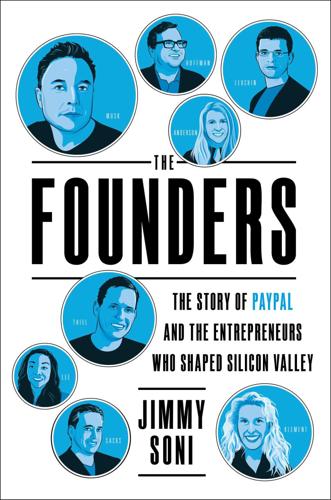
The Founders: The Story of Paypal and the Entrepreneurs Who Shaped Silicon Valley
by
Jimmy Soni
Published 22 Feb 2022
Beaming money via PalmPilot, the deck boasted, was a billion-dollar opportunity—“better than cash,” “better than checks,” and “better than credit cards.” More importantly, Confinity would “capture part of seigniorage as it shifts from the US Treasury.” Seigniorage is the difference between the face value of money and its production cost—an ancient concept. If you bring the royal mint a hundred pounds of silver and get back ninety-nine pounds in silver coins, the one-pound difference is seigniorage—a tax the king takes in return for transforming your silver into currency. Thiel hypothesized that technology companies, rather than the government, could serve as the intermediary—and keep this tax for themselves.
…
Thiel hypothesized that technology companies, rather than the government, could serve as the intermediary—and keep this tax for themselves. It was a bit of an abstruse concept. “To this day, I don’t fully understand what he meant,” Levchin admitted. But the numbers were real: per the estimates in the deck, seigniorage was worth almost $25 billion per year in the US. If Confinity captured even a modest 4 percent of that, the company would net $1 billion. Thiel and Levchin envisioned a cashless mobile world, with Confinity linking central banks, credit card companies, and retail banks. The company hoped to turn PalmPilots into the default form of payment and money transfer, replacing cash and checks.
…
During what Thiel called “an excruciating process,” the team presented over one hundred times—with pitch after pitch falling flat. Would-be investors asked sensible questions: Would people really beam money from handheld devices? What were the odds that four separate lunchtime companions would all own PalmPilots and have Mobile Wallet installed? Also, what exactly was seigniorage, and could Confinity really make money, as Thiel put it, “off the float”? As the rejections piled up, the team grew desperate. They began cold outreach to venture firms beyond Silicon Valley. Luke Nosek used contacts to earn a meeting with the venture division of the European mobile company Nokia.II The meeting with the head of Nokia Ventures, John Malloy, got off to a rocky start.
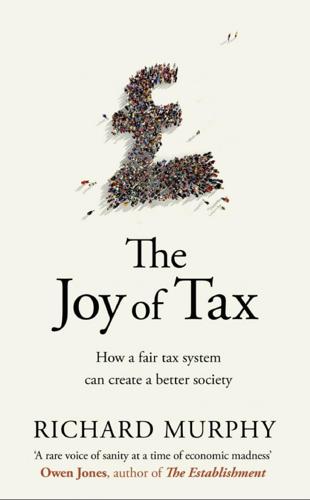
The Joy of Tax
by
Richard Murphy
Published 30 Sep 2015
This logic has particular relevance in the case of banks who can, as has already been noted in this book, create money out of thin air because they have been granted a banking licence, and can then charge interest on the funds that they have created costlessly. The gain in this case is technically called seigniorage, which is usually defined as the profit made by a government by issuing currency. Banking licences actively outsource this right to make profit: additional taxes on banks seek to recover the additional wealth that they have accumulated as a result. In combination these observations make an important point: what they imply is that some of the preferential tax regimes that have existed, for example for capital gains, which have attracted additional tax allowances for the people that enjoy them and have often been taxed at lower rates than are charged on income, make no economic sense.
…
K. 51 GDP 171 debt and 213 and economy 84 fiscal policy and 58–9 government spending as proportion of 76+n, 77, 81–2 taxation as proportion of 34–5 General Anti-Abuse Rule 112, 113, 224 General Anti-Avoidance Principle, proposed 224 Generally Accepted Accounting Principles, UK 222 gifts 183, 184 gilts 49–52 Gini coefficient 63n global warming see climate change global wealth tax 190 Global Witness 124 Google 135 government(s) 27, 39–40 balancing books/budget 52, 60–1, 76, 86–7, 94–5, 212–13, 238 borrowing 89 businesses, mistaken analogy with 86–7, 89 and creation of money 49, 209–10 demand for services to be supplied by 157–60 and the economy 104, 156–60, 170, 210 (see also austerity) intervention following 2008 crash 78, 79 and ownership 59 participation and 31, 37–44 spending see government spending states without 32 surpluses 58, 59, 60, 76–8, 130 and ‘taxpayers’ money’ 39–44 see also democracy government debt 46, 49–52, 59–60, 87, 213–14 government spending and business success 185 effects of cutting 89–90 flat taxes and 75 need for 95–6, 210 relationship to taxation 45, 52–5, 80–4, 162, 210, 211–12, 214 Greece 148 Green New Deal Group 9, 10 Green parties 84, 94 growth 83, 84, 90, 104, 158, 170, 171–2, 215 Guernsey 124 harmonization, international 133 health services 64, 158, 168 see also NHS Heritage Foundation 35 HM Treasury 109, 110–11, 114, 117 HMRC 112–14, 116, 119–21 access to 118–21, 202–3 and accountability 116–18, 203, 204–6, 218–20 attitudes 119–20 on compliance 33–4, 35, 67 and data exchange 123–4, 127 and research 108, 110 staff and resources 113, 120–1, 202–4 structure and governance 203–4, 219, 220 Hodge, Margaret 114, 117 horizontal equity 138–9, 197 House of Commons Library 109 House of Commons Select Committees 205, 220–1 see also Public Accounts Committee and Treasury Committee house prices 185–6, 214, 225–6, 229 housing 159, 175–6, 186, 225–7, 228–9, 238 housing support 192, 194, 229 identity theft 201 ignorance 68, 108 illegitimate economic activity 56 imports 88 income(s) 180–1 falling in real terms 83, 90 sources of 138–9 taxation and 31 under-declaration of 98–9 income tax 14, 16, 65, 163–5, 230 citizen’s income and 193–4 higher rates 73 as proportion of tax paid 28, 29, 30, 72 schedular form 152 tithing and 15 as universal 235 voting and 65 inequality 63n, 74 see also equity/equality and redistribution inflation 46, 53, 54, 57, 59, 61, 182, 210 flat taxes and 75 house prices and 185–6 influence 31, 37 information exchange 123–4, 127, 184 infrastructure 158–9, 229 inheritance taxes 15, 29, 31, 73, 183, 226 innovation 136–7 Institute of Directors 68–9, 72 Institute of Economic Affairs 68–9, 70–1, 101 Institute for Fiscal Studies 109 insurance premiums 29, 223 interest 51, 52n, 58, 181–2 banks and 49, 50 monetary policy and 59 money and 51 tax and 30, 196, 223, 228–9, 231 interests 69, 70, 71, 109, 113, 116 conflicts of 115 government and 19, 44 intergenerational contract 143 International Financial Reporting Standards 222 International Financial Reporting Standards Foundation 199 international issues 133–6, 197–8 see also tax havens interpretation 111–12, 153 investment 89, 176, 234 savings and 209, 231 investment income 72, 98, 99, 138, 163, 180, 224, 231–2 Ireland 126, 134, 146, 163 ISAs 175, 231 Jersey 10, 124, 126 Jesus 16 Joffe, Lord 114–15 Kennedy, John F. 32n labour, taxing 190 see also national insurance land ownership 185 land value tax, proposed 186–7, 227–8 land-based taxes 15, 16, 21, 163, 164, 185–7 landfill tax 31 landlords 228, 229 language 115–16, 153, 196, 218 law 36–7, 39, 148, 153 complexity 154, 217 letter and spirit of 112, 153, 154, 218 purposive basis 112, 217–18 law and order 132, 159 Lawson, Nigel 182 lawyers 69, 102, 114, 116, 217 liability 184, 221, 225, 226 see also companies libertarians and libertarian views 39–40, 42, 68–80, 132 life expectancy 167n, 168 Lincoln, Abraham 61+n living standards/needs 35, 57, 61, 141–4, 168 loans 47–8+nn, 49–52, 208, 209 repayment of 49, 50, 53 local government 65, 186 see also council tax London, City of 18–19, 187 loopholes 97, 112, 153–4, 168, 187, 196, 197 Luxembourg 126, 134–5, 146 macroeconomics 85, 87–8, 161, 165, 170–1 Magna Carta 18–19, 22, 37, 131 Man, Isle of 124, 126 marginal tax rates 145, 172–3, 174, 192, 194, 235 markets, government policy/taxation and 58–9, 61, 63–4, 170–1, 187–8, 191, 212, 215, 236 marriage 24–5, 225 Mazzucato, Mariana 136 Meacher, Michael 153–4 media comment 157, 158 microeconomics, misapplication to government 86–7 middle ground in politics 157–8 minimal-state ideology 155–6, 158 Mirrlees Review 109 misconceptions 86 mistrust 152, 154 Mitchell, Dan 134 monarchy 20–2, 117, 219 monetary policy 58, 59–60 money 46–7 creation of 45–52+nn, 53, 86–7, 181–2, 208–9, 214 debt and 213 decreasing value to individuals 144–5, 181 destruction of 48n, 49, 53, 213 and the economy 209 equivalence 181, 224, 233 importance of 57 profit and 48–9 promises and 49, 51, 56 tax and 14, 56–7, 85–8, 180 value of 56–7, 66 see also bank transactions and financial transactions mortgages 89, 228–9 MPs, resources available to 109–10, 112 multinational companies 124–7, 150–2, 198, 201, 222 Murphy, Richard 110, 112, 113, 126, 131n, 153–4, 192, 203n mutuality 133 nation states 23, 24, 25–7, 35 National Audit Office 205 national debt 46, 52, 76, 213 national insurance 167–9, 172–3, 189, 232 and benefits system 189, 191 as proportion of tax paid 29, 161, 169, 189 proposals for replacing 72, 164, 189, 190, 194, 232–3 and unearned income 231–2 needs 57, 141–4 see also sufficiency Netherlands, the 126, 135, 146 NGOs 110 NHS 158, 167, 189 Northern Ireland 166 objectivity 105 OECD 125, 126, 134n, 150, 151 Office for Budget Responsibility 52, 91–3, 205 Office for Tax Responsibility, proposed 205, 220–1 offshore arrangements 99–100, 190 oil 35, 63 opacity see secrecy Osborne, George 59, 76–8, 82, 90–1, 174 overdrafts 48 ownership, tax and 38–44 Oxford Centre for Business Taxation 108–9, 110 Oxford Dictionary, definition of tax 30–2, 35–6, 37, 43 Paine, Thomas 24 parties, political 84, 94 partnerships, business 42 partnerships (marriage) 24–5, 225 Paul, St 16 Pay As You Earn 167, 173 PCS (Public and Commercial Services Union) 203n peace 131–3, 136, 137 Peasants’ Revolt (1381) 20, 37 pension funds 50, 60 pensioners 72, 232 pensions 143, 167, 168, 174–5, 189, 192, 235 citizen’s income and 192 personal allowances 72, 193, 230, 235 Pickett, Kate 145 Piketty, Thomas 190 Plaid Cymru 84, 94 plutocracy 71 politicians 84–5 poll taxes 15, 16, 20, 33, 37, 186 pollution 63, 191, 212 poverty 192, 194 power 17, 20, 23 price elasticity of demand 64 product safety 159 profit, banking and 48–9 profit-shifting 134–5 proof, onus of 196, 217, 224 property taxation and 31, 39–44, 54, 71 see also council tax, housing and land property rights 39, 41, 42–3, 132 protest 33, 37 see also conflict Public Accounts Committee, House of Commons 109, 114, 117, 204 public spending see government spending Quaker beliefs 10, 131n quantitative easing 46, 47n, 49–52, 58, 60, 229–30, 238 Rabushka, Alvin 78–9 recession 78, 79–80, 191 reciprocal rights and double tax treaties 223 reclamation see under tax/taxation redistribution 62–3, 66, 144, 185, 230, 238 Reed, Howard 192 representation, taxation and 19–20, 22–7, 31, 37–8, 65, 66, 70–1 repricing, tax as 64, 66 research 108–10, 135–6, 236 responsibility 39 retirement, saving for 174–5, 231 see also pensions right-wing views 68–80, 156–7, 158 rioting 33 road use 191 Roman Empire 15–16 Rousseau, Jean-Jacques 26–7 royalties 181, 223 sales taxes 15–16, 163, 187 see also VAT saving 59, 87, 89+n, 90–1, 172 investment and 209 tax and 175, 231 schools 108 Scotland 33, 37, 166 independence referendum (2014) 23, 24, 26, 128–9 Scottish National Party 84, 94 secrecy 69, 99, 122, 151, 152, 201 secrecy jurisdictions 135 seigniorage 182 self-employed people 98, 167, 168, 173 shadow economy 55–6, 146–8 shareholders 200–1, 233 simplicity 133, 152–5, 218, 230, 236 of money creation 51 see also flat taxes Singapore 126 skills, funding 136–7 Smith, Adam 24, 70, 129–31, 137 smuggling 14, 163 social contract 26–7, 132–3 social mores, taxation and 24–7 social security systems 191–2 see also welfare benefits socialism 157 speculation 171, 185, 187, 214, 224 Spirit Level, The 145 stamp duty 29, 73, 187, 228 Starbucks 135 states and statehood 23, 24, 25–7 extent of role 156–60 see also government(s) stigma 194, 235 student loans 173–4 subjectivity 105 sufficiency 141–4 sustainability 57, 215 Switzerland 135 tax/taxation acceptance of 25–6, 32–8, 67–8, 96 administration of 16, 123, 219–21 (see also HMRC) alternatives to 45–7 and choice 68, 96, 103, 106, 126–9 as counterbalance 53–5 definitions and perceptions of 30–2, 35–6, 37, 40–4 education concerning 102, 106–8 efficient 160–1 embracing 25, 27, 44, 238 functions 55–66 history 13–26 inclusivity and default 196, 217 indirect 74 ownership 38–44, 216 payment in kind 14, 15, 16 political context 37–9, 105 process, stages of 122–3 progressive 15, 139, 145, 181, 189, 230 and property 39–44, 54 as proportion of income 74–5 range of and proportions of revenue raised in UK 28, 29 reasons and purposes for 52–66, 160, 178 as reclamation of money spent 52–5, 75, 81, 180, 210 regressive 139, 189–90, 227, 237 responsibility for 219 right to spend 39 scope of 196, 217 unacceptable 33, 37 see also under government spending tax abuse 14, 16, 96–102, 103, 168, 195–6 victims of 101 see also tax avoidance and tax evasion tax avoidance 43, 96–7, 99–102, 103, 110, 173, 198 anti-avoidance principle 112, 113, 196 flat taxes and 74 proposed legislation against 153–4, 224, 236 tax base(s) 16, 31, 122, 179, 222–3 defining 179, 196 finding 197, 201 inclusive 195–7, 217 inconsistent 183 tax competition 133–4, 135–6 tax design 169 tax evasion 43, 69, 96–9, 100–1, 103, 110 tax gap 110, 220 tax havens 35, 69, 99–102, 123–4, 126, 134, 135–6, 201–2 registration of companies in 151 and secrecy 149–50 UK and 146, 174 wealth taxes and 184 tax justice 220 tax justice movement 149, 151, 184, 201 Tax Justice Network 9, 124 tax offices 118–21 tax policy 156, 229–30 tax reliefs 25, 97, 165, 175, 176, 196 Tax Reporting Standards Board, proposed 222 Tax Research Network 109 Tax Responsibility, Office for, proposed 205, 220–1 Tax Select Committee, proposed 205 tax systems 129–55, 168–9, 171, 178–80, 224 Taxation, Department of, proposed 219–21, 227 Taxation and State-Building in Developing Countries (Brautigam et al.) 26n Taxpayers’ Alliance 68–9, 70, 72 ‘taxpayers’ money’ 39–44, 216 Teather, Richard 101 technology 135–6, 176 temporary residence rule, proposed 197, 222 tenants 228, 229 Thatcher, Margaret 33, 68, 70, 86, 101 theft 36, 43, 44 tithing 15 tobacco 64, 74, 191 trade deficit 89 transparency 123–7, 216 transport 158–9, 176, 191 Treasury Committee, House of Commons 117 tribunals 118 trust 119–20, 148–9, 152, 154 trusts 42, 184 truth 30, 52, 84, 133, 146–52 Turner, Adair 52n 2020 Tax Commission 72, 75, 76 Tyler, Wat 20 UK aggregate tax rate 35 proportion of tax taken by different taxes 28, 29, 139 right to leave 32 shadow economy 146 and tax havens 146, 174 tax paid by income decile 139–40 UK GAAP 222 ‘UK plc’ 86 UK political parties 84, 94, 157–8 unemployment, effects 83, 89 universal credit 174 universities 107–9 US dollar 55–6 USA, Declaration of Independence 22–3, 24, 26 VAT 64, 74, 174, 187, 189, 236–7 exemptions 64, 236 as proportion of tax paid 29, 161 vertical equity 139 Virgin Islands, British 124 voting rates 42, 65 Walmart 150 Walmsley, Brad 70–1 wars 18, 53, 131–2 wealth concentration of 185 taxation and 28–30, 31, 73–4, 180–7, 190–1 Wealth of Nations, The (Smith) 24, 129–31 wealth taxes 16, 123, 163, 165, 183–7 global 190, 226–7 proposed 226–7, 228 see also financial transactions tax welfare benefits 62–3, 167 interaction/integration with tax 142, 174, 191–5, 234–6 national insurance and 189 unclaimed 194 as universal 235 welfare state 142–3 well-being, taxation and 35, 61 Wilkinson, Richard 145 work 194–5, 238 see also employment World Economic Forum 74 Worstall, Tim 71 Zimbabwe 35 About the Author Richard Murphy is a UK chartered accountant.
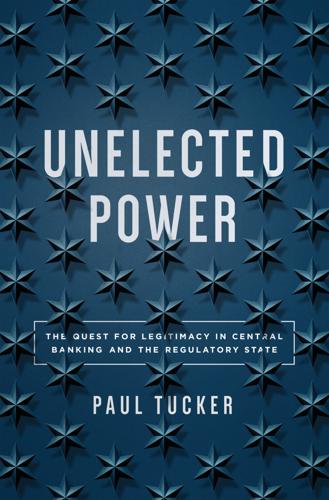
Unelected Power: The Quest for Legitimacy in Central Banking and the Regulatory State
by
Paul Tucker
Published 21 Apr 2018
At one end of the spectrum, the fiscal authority could give a formal blanket indemnity against loss, but dictate the population of assets eligible in the central bank’s operations and, thus at least indirectly, the scope and form of its market operations. At the other end of the spectrum, the central bank could be given a statement of purposes and permitted to offset losses against the seigniorage income due to the fiscal authority, with freedom to choose the form and scope of its operations. There are myriad points in between those poles, including central banks surrendering all the seigniorage, financing themselves instead from a levy on the banking system (the UK model), and case-by-case approval and indemnities for certain kinds of operation. A society should know where its central bank regime lies on that spectrum, and recognize that its choice matters to insulation.
…
A recent paper going beyond insulation from the president is Selin, “Agency Independent.” 9 Research on the US administrative state finds that US “independent-agency” regimes are more durable there than policy regimes delegated to the executive branch (including executive agencies) (Lewis, “Policy Durability”). 10 The difference in political contexts and cultures makes it hard for me to understand why the Fed did not say publicly that this was wrong: that seigniorage should go to the central federal coffers for Congress to dispose of. 11 As I write, some of these issues are heading to the Supreme Court, and a new acting head has been appointed. 12 Thornborough, “Overcriminalisation.” 13 The Securities and Exchange Act of 1934 creates a criminal offense of financial fraud but does not define it.
…
First, allocating or steering credit to particular economic sectors or specific borrowers seems at odds with the Delegation Criteria since it involves choosing who to favor.3 Second, outright purchases of risky bonds are just that: risky. If the risks crystallize, the taxpayer picks up any costs, if only through the central bank paying the Treasury lower dividends (known as seigniorage; broadly, the profits central banks make by financing interest-bearing assets through the creation of money). As I write, this will not go away quickly. Even after purchases cease, it will take a long time for the portfolios of purchased securities to mature or be sold off, with private financing taking their place.

Stake Hodler Capitalism: Blockchain and DeFi
by
Amr Hazem Wahba Metwaly
Published 21 Mar 2021
Stable-coin Stable-coin is a cryptocurrency designed to reduce fixed-priced Bitcoins' volatility compared to "fixed" asset baskets or assets. Stable-coin can be linked to cryptocurrency, fiat currency, or commodities (e.g., precious or industrial metals). Soluble stables in currency, commodities, or fiat currency are known to be hedged, and the stables associated with the algorithm are called seigniorage (non-backed). Stable-coins are cryptocurrencies linked to an asset outside of the cryptocurrency community, for instance, the dollar or euro. The main objective here is to stabilize the price. Backed Stable-coin The advantage of asset-based cryptocurrency is that coins are stabilized by assets that fluctuate outside the cryptocurrency space.
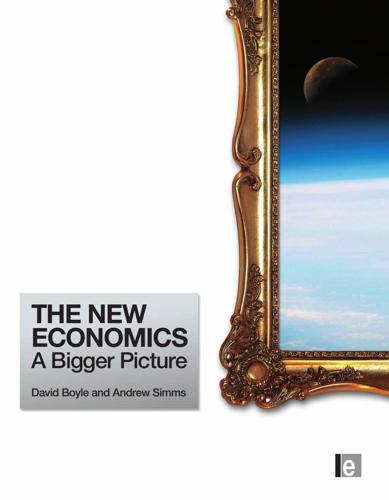
The New Economics: A Bigger Picture
by
David Boyle
and
Andrew Simms
Published 14 Jun 2009
Thomas Edison and Henry Ford teamed up to urge that government borrowing for capital projects should be done differently: the government should create the money themselves, lend it to the project without interest – or as the Islamic banks do, at a fee – and withdraw it from circulation to avoid inflation as the project began to pay.19 At present, the profits that come from creating money – known as seigniorage – nearly all go to the banks, when it is argued that they properly belong to us as citizens. It is certainly true that the WHY DID CHINA PAY FOR THE IRAQ WAR? 59 power to create unlimited sums, which has been taken up by the banking system as a whole, is a privilege that ought to be taxed at the very least and certainly better regulated.
…
(John Kenneth) 41, 51 gambling 14–15, 152 Gandhi, Mohandas (Mahatma) 18, 19, 21, 110, 112 Gates, Bill 141 Gates, Jeff 141–2 GDP (gross domestic product) 10, 32, 36–40, 42, 43, 54, 79 alternatives to 40–2, 43 bad measure of success 10, 37, 55, 78 INDEX global 141 UK 4 see also growth genetically modified crops see GM crops Germany 33, 50, 58 Gladwell, Malcolm 68 Global Barter Clubs 57, 58 global commons 113, 148 global currencies 56, 61, 120, 147–8 global greenback 61 global warming 3, 3–4, 115, 155 see also climate change globalization 8, 28, 143, 153 see also interdependence GM (genetically modified) crops 91, 117, 119, 140–1 Goetz, Stephan 124 gold standard 8, 143 Good Life, The (BBC sitcom) 69 goods, local 19, 109, 110 Goodwin, Fred 142 government borrowing 37–8, 49–50, 58, 62, 141 governments 2, 28, 116, 129, 158 creating money 58–9, 62, 90 propping up banking system 6, 7 Graham, Benjamin 120 Grameen Bank 26, 143–4, 153 Great Barrington (Massachusetts) 57, 151–2, 153 Great Depression 3, 36, 57 green bonds 157 green collar jobs 106, 157 Green Consumer Guide, The (Elkington and Hailes, 1988) 26, 69, 72 green economics 23, 100, 117 green energy 26, 97, 102–3, 114, 156, 157 Green New Deal 156–8 green taxation 153 greenhouse gas emissions 3–4, 115, 148 gross domestic product see GDP Gross National Happiness 43 growth 2, 11, 12–13, 23, 36–7, 38–40, 42, 43 185 bad measure of success 10, 158 maximizing 25 and poverty 4, 39–40, 81–2 and progress 39, 78 wealth defined in terms of 32 and well-being 4–5 see also GDP guilds 80, 80–1 happiness 12, 18, 29, 41, 43, 45–6 Happy Planet Index 32–3, 34, 43 Hard Times (Dickens, 1854) 36 HBOS 7 health 46, 72, 78, 96, 115, 129 health costs 117 healthcare 13, 33, 44 hedge funds 5, 7, 97, 120 Helsinki (Finland) 102 HIV/AIDS 70, 111, 135, 148 Honduras 139, 141 house prices 36, 46, 79, 83, 91, 126–7, 151 London 53, 54, 91 see also mortgages Howard, Ebenezer 105, 158 HSBC 5 human interaction 67–8, 74 human needs 20, 24, 67, 86 human rights 110–11, 116, 147 ill-health 35, 38, 46 ‘illth’ 29, 35 IMF (International Monetary Fund) 27, 82, 91, 135–6, 139, 143, 147, 147–8 incomes 24, 37, 43, 44, 78, 79, 81 and happiness 45–6 inequalities 37, 81, 82, 142 of poorest 4, 81, 82, 112, 142 Index of Sustainable Economic Welfare see ISEW India 82, 91, 110, 119, 136, 139–40, 153 indigenous knowledge 82, 117 inequality 4, 81–2, 96, 112–13, 116 inflation 8, 22, 58, 90 information technology 58, 59, 115 186 THE NEW ECONOMICS intellectual property 82, 91, 110, 113, 116, 117 interdependence 111–20, 135–8 Keynes on 19, 109, 110, 115, 143 see also globalization interest 8, 11, 11–12, 58, 77, 157 interest rates 144, 144–5 interest-free money 43, 73, 84, 90 intergenerational equity 25, 117 international bankruptcy 147 International Monetary Fund see IMF investment 14, 45, 53, 60, 104, 118, 137–8 ethical 26, 69–70, 74, 154 involvement 71, 75, 128–30 Iraq 49, 60, 136 ISEW (Index of Sustainable Economic Welfare) 40–1, 43, 78 Islamic banking 58, 90, 146 islands, small 31–2, 33–4 Italy 33, 119–20, 138 Ithaca hours currency 57, 58 It’s a Wonderful Life (film, Capra, 1946) 38 Jacobs, Jane 56, 110, 126 Jaffe, Bernie 126 Japan 26, 50, 91, 113, 119, 128 Jefferson, Thomas 18, 20 Jersey 52, 53 Jones, Allan 103 Jubilee Debt campaign 137 junk bonds 1, 142–3 just-in-time 123–4, 155 Keynes, John Maynard 2, 13–14, 15, 17, 21, 37, 55 on interdependence 19, 109, 110, 115, 143 international currency 61, 120 on local production 19, 109, 110 on ‘practical men’ as ‘slaves of some defunct economist’ 10, 35, 67, 87, 159 Keynesian economics 8, 18, 22, 27, 28 Kinney, Jill 130 Knowsley (Merseyside) 104 Kropotkin, Peter 18 Krugman, Paul 52 land 19, 82, 96 land tax 43 landfill 97, 98, 100, 107 Layard, Richard 41 Lehigh Hospital (Pennsylvania) 129 Letchworth Garden City (Hertfordshire) 105 lets (local exchange and trading systems) 57 liberalism 18, 19, 27 Lietaer, Bernard 56, 61, 120 life 19, 29, 55, 69, 86, 91 need for meaning 42, 75 life expectancy 31, 32–3, 82 life poverty 82–3 life satisfaction 31, 33, 41, 42 Lima (Peru) 130–1 Linton, Michael 57, 58 Living Economy, The (Ekins, 1986) 24–5 LM3 (Local Money 3) 60, 104–5 loans see debt Local Alchemy programme 152–3 local circulation of money 103–5, 107, 124, 151–2 local currencies 26, 56, 57, 58, 59, 60, 151–2, 153 local economies 26, 81, 85, 86, 105–7, 118, 124, 133 local exchange and trading systems (lets) 57 local food 2, 118, 119–20, 151 local governments 6, 44, 60 local life 4, 81, 158 Local Money 3 see LM3 local production 109, 116, 118 local savings schemes 61 local shops 75, 82–3, 104, 124, 124–5, 126, 151 supermarkets and 80, 105, 125 local wealth 14, 53–4 localization 155–6, 159 London 52, 53, 61, 97, 102, 103 house prices 53, 54, 91 traffic speed 65–6 INDEX London Underground 147 Lutzenberger, Jose 26 Macmillan Cancer Care 88–9 McRobie, George 22, 24 mainstream 4–5, 26, 154, 159–60 see also economics Malawi 135–6, 137 Malaysia 51 Manchester United 155 manipulated debt 139–41 markets 10, 12, 51, 70, 158 financial 1–2, 52, 53, 55, 138, 154–5 free 22, 85, 112–13 new economics and 67, 72–5, 85 Marsh Farm estate (Luton) 104–5, 152–3 Maslow, Abraham 67 materialism 12, 46–7 Max-Neef, Manfred 24 Maxwell, Robert 143 MDGs (Millennium Development Goals) 39, 136 Mead, Margaret 129 meaning, need for 42, 75 measurement problem 36–40 measuring 12, 42, 55, 85 success 2, 8, 10, 43, 44, 55, 154, 156, 158 value 10, 15, 29, 53, 59, 115 wealth 32, 37–40, 53–4 well-being 4, 18, 32–3, 34, 43 mechanics, Cuban 95–6, 97 medieval economics 78–80, 80–1 mega-rich 120, 141, 142 mental health 4, 35, 36, 46, 68, 83 Merck 99 micro-credit 26, 143–4, 145, 146, 151, 153 Milkin, Michael 142 Millennium Development Goals see MDGs minimum wage 92 misery, of UK young people 35–6 Mishan, E.J. 40 Mogridge, Martin 65–6, 74 Mondragon (Spain), cooperatives 153 money 8, 11, 13, 18, 27, 29, 36, 95 187 as a bad measure 10, 15, 18, 53, 59, 90, 143, 154 creating 7, 56–7, 58–9, 84, 90, 120, 138, 147 designed for money markets 53 economics and 25, 127 externalities 35 and life 55, 86, 154, 159 local circulation 103–5, 107, 124, 151–2 means to an end 15 new economics view 15, 59–60, 89 new ways of organizing 56–60 re-using 103–5 replacing with well-being 42 slowing down 51–2, 60 too little 57 types of 14–15, 57, 59, 120 and value 10, 15, 53, 59 and wealth 15, 19, 32, 38, 78 and well-being 18, 21, 81 see also GDP; growth; price; trickle down money flows 26, 50–2, 60, 103–5, 107, 124, 136–8 money markets 1–2, 52, 53, 55, 138, 154–5 money poverty 81–2 money system 7–8, 50–6, 60 monopolies 8, 20, 83, 84–6, 89–90, 125–6, 133, 146 Monsanto 85, 140 moral philosophy 12, 19, 72–3 morality 8, 18, 28, 74, 115 economics and 12, 19, 22 Morris, William 18, 78, 151 mortgages 1, 4, 5–6, 6, 7, 46, 91 working to pay 46, 68, 73, 77–8, 79, 81, 83, 84, 89, 126–7, 140 see also house prices motivations 4–5, 11, 67–9, 70, 71, 72, 73, 75 multinationals 14, 61, 84–5, 90, 137–8, 139, 143 multiple currencies 58, 59–60, 60, 90 multiplier effect 103–5 Murdoch, Rupert 52 188 THE NEW ECONOMICS Myers, Norman 117 Nanumaea (Tuvalu) 34 national accounting 37–8, 38–9 national debt 49–50, 83, 84, 139, 141 national grid 102, 106 National Health Service see NHS natural capital 3, 99 natural resources 22, 40, 43, 84, 97–8 needs 20, 24, 25, 67, 75, 86 basic 25, 89, 91–2, 115 nef (the new economics foundation) 24, 26, 45, 71, 104, 131–2, 145 Local Alchemy programme 152–3 see also Happy Planet Index; LM3 ‘neo-liberal’ policies 8, 27–8 Nether Wallop (Hampshire) 80, 81 The Netherlands 58, 106, 138 New Century 5 New Deal for Communities 152 New Deal (US) 157 new economics 2–3, 9–10, 18–19, 28–9, 59, 153–4, 159–60 Cuba as object lesson 96–7 history of 9–10, 18–19, 21–7 and the mainstream 26 as new definition of wealth 15 principles 35, 157–8 new economics foundation see nef New York City 52, 128 News Corporation 52 NHS (National Health Service) 87, 114, 131 Northern Rock 6 Nottingham 35 Nu-Spaarpas experiment 106 Obama, Barack 154, 157 obsolescence, built-in 98, 100, 101 odious debt 146 offshore assets 136–7 offshore financial centres 52–3, 61 oil 3, 96, 115, 117, 155 Oil Legacy Fund 157 orchards 111, 112, 115, 124 organic food 26 Ostrom, Elinor 127 out-of-town retailing 75, 80, 123, 132 overconsumption 32, 40, 44, 113 Owen, Robert 57 ownership 11, 46, 60, 91, 118, 156 paid work 87–9, 92 palm oil 112 Partners in Health 130–1 peak oil 3, 96, 117, 155 Pearce, David 25–6, 98, 115 Peasants’ Revolt (1381) 18 pensions 7, 44, 61, 73, 155 people, as assets 15, 57–8, 128–9, 130, 131 permit trading 45, 117–18, 148 personal carbon allowances 45, 117–18 personal debt 7, 36, 83–4, 91, 140, 141 Petrini, Carlo 119–20 Pettifor, Ann 135, 137 philanthropy 130, 133 policy makers 28, 35, 73, 87, 90 assumptions of 67, 68, 73, 128 Keynes on 10, 35, 67, 87, 159 political agenda 42–7 politicians 11, 54, 159 politics, new 159 pollution 10, 35, 37, 40, 98, 112, 114 by GM genes 91, 117, 119 poor 29, 145–6 Porritt, Jonathon 23 post-autistic economics 9–10, 71–2 poverty 4, 23, 35, 79–80, 81–2, 127 economic system and 13–14, 18, 29, 81–2, 154 interdependence leading to 111–15 reduction 39–40, 51–2, 61, 116, 124–5 poverty gap 4, 52–3, 78, 82 power 10, 12, 25, 28, 53, 141–2 corporate 20, 28, 85 monopoly power 83, 89–90, 125–6, 146 power relationships 29, 114 price 10, 67, 72, 73, 115, 153 Price, Andrew 132 INDEX prices 80, 156, 158 Pritchard, Alison 23 product life cycle 97–8, 101 professionals 130, 132, 133, 159 profits 12, 13, 99 progress 36, 37–8, 39, 43, 44, 77–8, 81–2, 84 Proudhon, Pierre-Joseph 120 psychology, economics and 67–8, 71, 72–3 public goods 148 public sector commissioning 131–2, 133 public services 45, 74, 127–32, 158 public transport 66, 74 ‘purchasing power parity’ 81 Putnam, Robert 126–7, 127–8 189 retirement 46, 73 see also pensions rewarded work 88 rewards 7, 8, 11, 25, 92, 141, 142 roads 66, 115 Robertson, James 17, 22, 23, 55, 145 Rockefeller, John D. 28 Roman Catholic church 19, 21, 117 Roosevelt, Eleanor 96 Roosevelt, Franklin Delano 157 Rotterdam (The Netherlands) 106 rubbish 97–105 Rupasingha, Anil 124 Rushey Green surgery (London) 131 Ruskin, John 17–18, 18, 29, 35, 78, 81 Russia 110 qoin system 58 rainforests 4, 10, 111, 112 ‘rational man’ assumption 10, 71 RBS 142 re-use 97, 99, 100–5 Reagan, Ronald 22, 27 real money, generating 120 ‘real’ wealth 2, 32, 36–40 reciprocity 44, 128, 128–30, 133 see also co-production recycling 97, 98, 100–1, 105–6, 106–7 redistribution 19, 27, 52, 96 regeneration 27, 104, 105, 107, 116, 124, 128 regional currencies 58, 59, 60 regulation 129, 156 competition 85, 113, 125, 126, 133 financial sector 53, 85, 157 relationships 4, 69, 83, 128–30 remittances 137 Rendell, Matt 33 renewable energy 26, 97, 102, 102–3, 114, 156, 157 repair 97, 98, 101, 105, 107 resources 32, 43, 97–8, 99, 100–1, 114, 158 local 25, 115 natural 22, 40, 43, 84, 97–8 St Louis (Missouri) 131 Samoa 34 Sane (South African New Economics) 58 saving seeds 91, 117, 119, 141 savings 7, 46, 73, 90, 157 schools 131 Schor, Juliet 83 Schumacher, E.F. (Ernst Friedrich, ‘Fritz’) 1, 18, 21–2, 27, 114, 117 SDRs (special drawing rights) 147–8 Seattle (Washington) 41 seeds 91, 117, 119, 140, 141 seigniorage 58–9 Sen, Amartya 12 SERs (special emission rights) 148 set prices 80 sharing 34, 44, 91, 119, 140 shopping 26, 80, 82–3, 104, 105, 125, 133 shops 20 local 75, 80, 82–3, 104, 105, 124, 124–5, 126, 151 see also out-of-town retailing; supermarkets short-termism 11, 13, 14–15 SIVs (structured investment vehicles) 1, 5–6, 6 skills 13, 60, 98, 100, 101, 105, 132 190 THE NEW ECONOMICS Slow Food 118, 119–20 Small is Beautiful (Schumacher, 1977) 1, 21 small islands 31–2, 33–4 small-scale banks 146 Smith, Adam 89 social auditing 26, 45, 153–4 social banks 144, 146 social capital 19, 33, 54–5, 86–7, 89, 126–7, 132 Wal-mart and 124–5 social credit 19, 58, 59, 90 social networks 36, 127, 132 social norms 67–8, 71 social relationships 34, 45 social return on investment (SROI) 45 Soros, George 51, 148 South Africa 136 South African New Economics (Sane) 58 South Shore Bank (Chicago) 144 sovereignty 55, 113 special drawing rights (SDRs) 147–8 special emission rights (SERs) 148 speculation 22, 53, 81, 82, 84, 146, 158 deterring 51–2, 60, 61 financial 7, 15, 50–1, 51–2, 61 spirituality 4–5, 18, 21–2, 75, 79, 81 SROI (social return on investment) 45 Stamp Out Poverty 61 Starkey, Richard 118 state 12–13, 28, 155 see also governments steady-state economy 43, 44 Stern Report (Stern, 2006) 155 Stiglitz, Joseph 61 stress 4, 35, 37, 83 structured investment vehicles see SIVs sub-prime loans 1, 5–7, 144 sub-Saharan Africa 82 ‘subsidiarity’ 117 subsidies 11, 82, 112, 113, 117, 119, 123–4 success 79–80, 89 measuring 2, 8, 10, 43, 44, 55, 154, 156, 158 suicides 83, 91, 140 super rich 120, 141, 142 supermarkets 80, 85, 90, 104, 105, 123–6, 129 sustainability 24, 73, 89, 113, 114, 116, 117 sustainable development 51–2, 61 Swann, Bob 120, 151 Sweden 102 Swift, Jonathan 18 Switzerland 52, 62 T-bills (Treasury bills) 49–50, 58 takeovers 84, 142, 143 talent system 58 targets 9, 41, 129 tariffs 113 tax havens 15, 52–3, 53, 61, 136, 157 Tax Justice Network 136–7 taxation 73, 92, 116 taxes 10, 15, 27, 32, 43, 62, 136–7 paid by corporations 52, 61, 137, 157 TB (tuberculosis) 130, 148 TEQs (tradeable energy quotas) 117–18 terra (currency) 56, 61, 120 Tesco 85, 116, 125 Thatcher, Margaret 21, 22, 23, 27 The Other Economic Summit see TOES Thoreau, Henry David 69 time 44, 45–6, 60, 103, 132 time banks 58, 59, 60, 89, 92, 123, 131, 132 Titmuss, Richard 65, 70 Tobin, James 51–2 Tobin Levy 51–2, 61 TOES (The Other Economic Summit) 23–5 Toffler, Alvin 88 trade 25, 81, 109–10, 111–15, 116, 148, 158 fair trade 26, 119, 145, 153 Trade-Related Aspects of Intellectual Property see TRIPS tradeable energy quotas (TEQs) 117–18 traffic speed 65–6, 74 transport 67, 74, 112, 115 see also public transport Treasury bills (T-bills) 49–50, 58 INDEX trickle down 27–8, 39–40, 138 ‘doesn’t work’ 27, 52, 104 TRIPS (Trade-Related Aspects of Intellectual Property) agreement (1995) 113, 117 tuberculosis (TB) 130, 148 Turning Point network 23 UK (United Kingdom) 4, 39, 55, 61, 70, 85, 119, 145 aid from 136 corporation tax gap 137 cultural enrichment 111 debt 83, 141 Ecological Debt Day 114 energy 102, 114 food production 96, 114 Happy Planet Index 32 ‘illth’ 4, 35 interest rates 144–5 local savings schemes 61 money deposits 136 orchard loss 111, 112, 115, 124 poverty 82 real costs of road transport 115 super-casinos 14 trade 112, 113 well-being 4, 35–6, 41, 68 working hours 68 young people in 35–6 see also house prices Ukraine 110 UN (United Nations) 39, 51–2, 60, 91, 110–11, 157 unemployment 44, 46, 55–6, 91–2, 157 unpaid work 87–9 Unto This Last (Ruskin, 1860) 18, 29 USA (United States) 39, 57, 61, 82, 113, 119, 127, 157 and Cuba 95 debt 49–50, 84, 141 Happy Planet Index 32 invasion of Iraq (2003) 49, 60 subsidies 11, 113 trade deficit 50 191 unemployment 55 well-being deteriorating 41, 68 usury 80, 81, 144–5 value 44, 98, 99 measuring 10, 15, 29, 53, 59, 115 values 11, 71, 115, 127 Vanuatu 31–2, 35, 42 Vaxjo (Sweden) 102 vegetable box schemes 104 ‘victory gardening movement’ 96 Virgil, Eclogues 110 voluntary sector 13, 87, 132, 145 voting 124–5, 127 Wal-mart 104, 123, 124–5 Wall Street Crash (1929) 1, 51, 90 Waring, Marilyn 38–9 Washington Consensus 27–8 waste 97, 100–1, 158 Waste Electrical and Electronic Equipment directive see WEEE directive wealth 18, 28, 38, 41–2, 52, 89, 141–2, 152 defining 18–19, 32, 34, 35, 38 and ‘illth’ 29, 35–6 local 14, 53–4 measuring 32, 36–40, 53–4, 143 money and 19, 32, 38, 78, 143 new economics and 3, 15, 35, 37 real 2, 32, 37–40 see also Happy Planet Index WEDGE project 23 WEEE (Waste Electrical and Electronic Equipment) directive 98, 100, 101 welfare 25, 28, 44, 127, 129, 153 Welfare State 19, 129 well-being 4–5, 25, 45–6, 99, 158 demand for 4–5, 11, 68–9 falls in 4, 37, 41, 68, 78 GDP and 4, 36, 37 measuring 4, 18, 32–3, 34, 43 money and 18, 21, 81 as motivation 4–5, 11, 68–9, 72 new economics and 41–7, 68–9 192 THE NEW ECONOMICS origins of 43 willingness to pay 99 Willington, Sally 23 Wir currency 62 Witt, Susan 151 Woking (Surrey) 102–3 women 38–9, 77–8, 79, 83, 144 work 24, 45, 81, 84–5, 86–7, 92 concept of 25, 83, 86, 87–9 to pay mortgages 46, 68, 73, 77–8, 79, 81, 83, 84, 89, 126–7, 140 of women 38–9, 77–8, 83 working hours 45–6, 78, 79, 83, 92 World Bank 27, 81, 82, 91, 137, 139, 143, 147 Yank Tanks (film, Schendel, 2002) 95 young people, UK 35–6 youth courts 129, 132 Yunus, Mohammed 143–4 Zimbabwe 32 Zurich (Switzerland) 66
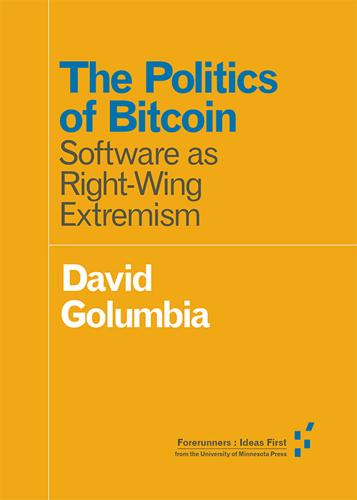
The Politics of Bitcoin: Software as Right-Wing Extremism
by
David Golumbia
Published 25 Sep 2016
Among the sixty-two comments made to just one brief story (Farivar 2013) reporting these hearings on the relatively levelheaded technology site Ars Technica, we find the following: The argument that fiat allows a country to avoid debasement is spurious at best given that monetary printing beyond demand either to spur economic growth, or collect seigniorage, is just like debasement in the end result’s decreasing purchasing power of nominal values. (user k2000k)[1] The Fed isn’t a part of the government. It’s a privately owned bank, the shareholders, of which, are kept secret. They have exactly zero authority on monetary policy. They impose their control over the money supply by adjusting the interest rate on loans they give to other banks.

Super Continent: The Logic of Eurasian Integration
by
Kent E. Calder
Published 28 Apr 2019
The Bretton Woods system of 1944 established the US dollar as the primary key currency of world affairs, with the World Bank and the International Monetary Fund as the central global institutions. As a consequence, the US has enjoyed what Valéry Giscard d’Estaing enviously called the “exorbitant privilege” of a key-currency seigniorage that imposed only very limited fiscal constraints of Washington’s ambitious foreign policies. The United States was, as a consequence, able to intervene proactively in Korea, Vietnam, Iraq, and other hot spots across the world, confident of repaying the considerable fiscal costs involved in its own currency without going to international financial brokers, as Britain had been forced to do during the Suez crisis of 1956.
…
The United States was, as a consequence, able to intervene proactively in Korea, Vietnam, Iraq, and other hot spots across the world, confident of repaying the considerable fiscal costs involved in its own currency without going to international financial brokers, as Britain had been forced to do during the Suez crisis of 1956. Washington has enjoyed the attractive option of intervening unilaterally on a global basis, without the need in an extremity for special international consultation. This invaluable ability lies at the core of US global leadership capacity. 220 chapter 10 The seigniorage role that the US enjoys as the issuer of a key global currency also has little-recognized but crucial political-economic implications at home. It allows the Federal Reserve to control domestic interest rates and to regulate them preeminently on the basis of domestic considerations. American homeowners no doubt enjoy more stable home mortgage conditions and rates, due to the dollar’s key currency status, than would otherwise be true.
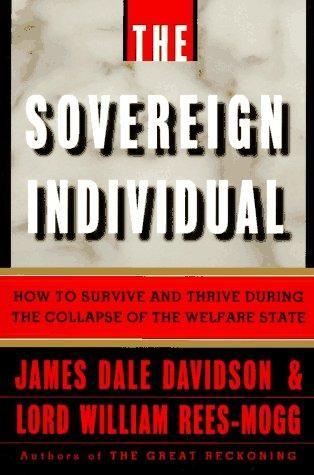
The Sovereign Individual: How to Survive and Thrive During the Collapse of the Welfare State
by
James Dale Davidson
and
William Rees-Mogg
Published 3 Feb 1997
"... as the king by his perogative may make money of what matter and form he pleaseth and establish the standard of it, so may he change his money in substance and impression, and enhance or debase the value of it, or entirely decry and annul it” FROM AN ENGLISH COURT DECISION, 1604 THE DEATH OF SEIGNIORAGE Governments will not only lose their power to tax many forms of income and capital; they are also destined to lose their power of compulsion over money. In the past, megapolitical transitions have been associated with changes in the character of money. (The introduction of coinage helped launch the five-hundred-year cycle of expansion in the ancient economy that culminated with the birth of Christ and the lowest interest rates before the modern period.
…
Debtors will be squeezed as long-term liabilities contracted under the old system are liquidated, and concessionary credits dry up. 165 Altered by Competition Governments facing serious competition to their currency monopolies will probably seek to underprice the for-fee cybercurrencies by tightening credits and offering savers higher real yields on cash balances in national currencies. Some governments may even seek to remonetize gold as another expedient to meet competition from private currencies. They may well reason that they could gain higher seigniorage profits from a loosely controlled nineteenth-century gold standard than would be the case if they allowed their national currency to be displaced entirely by commercial cybermoney. But not all governments will respond in the same way. Those in regions where computer 'usage and Net participation are low may opt for old-fashioned hyperinflation in the early stages of the cybereconomy.
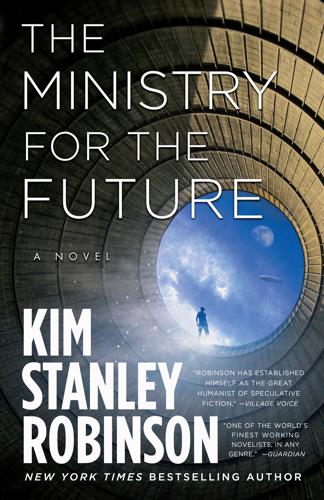
The Ministry for the Future: A Novel
by
Kim Stanley Robinson
Published 5 Oct 2020
Just the people Mary wanted to talk to. All central banks were curious hybrids, and the US Federal Reserve was no exception. It was a federal agency, therefore a public bank, but it was funded by private banks, at the same time that it oversaw them. It created money, being along with the Treasury the seigniorage function of the United States, and between that and setting interest rates it was thus responsible for the state of the US dollar, the strongest currency in the world, the currency every other currency was pegged to— the one everyone ran to whenever there was a currency scare of any kind. The money of last resort, so to speak.
…
Even admitting that these last were in some senses fictional dollars, it was still very clear: the market was bigger than all the nation-states put together. Mary shook her head. Even if market and state were two parts of a single system, that single system was ruled by law; and the laws were made by the nation-states; they could therefore change the laws, that was sovereignty, that was where seigniorage and legitimacy and ultimately social trust and value resided. The market was constructed by, and parasitic on, that structure of laws. The market can buy the laws, one of them suggested. The market is impervious to law, another added. It is its own law, it is human nature, it is the way of the world.
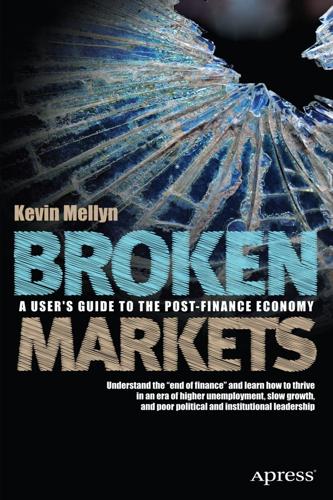
Broken Markets: A User's Guide to the Post-Finance Economy
by
Kevin Mellyn
Published 18 Jun 2012
From a bank perspective, in check-writing countries such as the United States (which accounts for the vast majority of all checks), no product generates a higher liquidity premium or more fee revenue per account. Clearing checks is the most profitable activity of the Federal Reserve System and a big moneymaker for correspondent banks. As for cash, central banks basically print the stuff for pennies per note and sell it to banks at face value. This currency monopoly of the state is called seigniorage and is worth tens of billions to governments around the world. All these things leave banks and even central banks conflicted about how much effort they should invest in trying to force the remaining paper out of the system. In part, this lack of investment commitment reflects the fact many cash services like ATMs can defend their stand-alone profitability, but the main inhibitor is that branch networks, ATMs, and physical-paper-handling logistics cannot be eliminated substantially unless cash and checks fall out of use almost entirely.
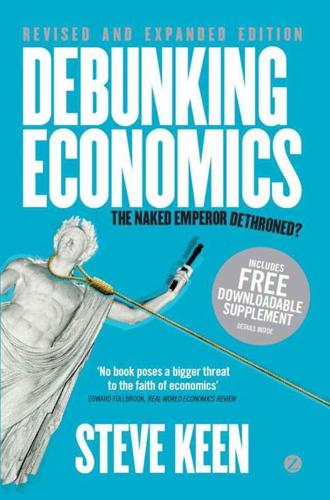
Debunking Economics - Revised, Expanded and Integrated Edition: The Naked Emperor Dethroned?
by
Steve Keen
Published 21 Sep 2011
The fact that a monetary economy uses a token – something that is intrinsically worthless – as a means of exchange implies two further key conditions ‘In order for money to exist’: b) money has to be accepted as a means of final settlement of the transaction (otherwise it would be credit and not money); c) money must not grant privileges of seigniorage to any agent making a payment. (Ibid.: 3) From this Graziani derived the insight that ‘any monetary payment must therefore be a triangular transaction, involving at least three agents, the payer, the payee, and the bank’: The only way to satisfy those three conditions is to have payments made by means of promises of a third agent, the typical third agent being nowadays a bank […] Once the payment is made, no debt and credit relationships are left between the two agents.
…
Chapter 14 1 Discussed in Chapter 10. 2 The nominated policy failing this time would probably be the alleged deviation from the Taylor Rule after 2001 – the case Taylor himself is already making (see Box 10.1). 3 Seppecher’s Java-based model is accessible at p.seppecher.free.fr/jamel/. 4 And they incur essentially no costs in doing so – the cost of ‘producing’ a dollar is much less than a dollar. This is the source of Graziani’s third stricture that the system can’t enable banks to exploit this opportunity for seigniorage. 5 Economists normally say ‘agents’ here rather than classes – given the microeconomic focus of neoclassical modeling, and the pejorative association that class was given by nineteenth-century politics. I use the term classes because social classes are an objective reality in capitalism, and because the SMD conditions, as Alan Kirman put it, suggest that ‘If we are to progress further we may well be forced to theorise in terms of groups who have collectively coherent behaviour […] Thus demand and expenditure functions if they are to be set against reality must be defined at some reasonably high level of aggregation.

The Age of Stagnation: Why Perpetual Growth Is Unattainable and the Global Economy Is in Peril
by
Satyajit Das
Published 9 Feb 2016
They can operate without conventional capital, creating reserves and printing money, but a large loss may affect their credibility, and their ability to perform functions and implement policies. Central banks earn the difference between interest received on government securities acquired and the near-zero cost of money (notes and reserves) created to pay for these purchases. As long as the current value of this future seigniorage income is greater than its liabilities, a central bank is considered solvent. Like the banks they regulate, central banks are leveraged. The US Federal Reserve has US$54 billion in capital, supporting assets of around US$4 trillion. The European Central Bank has €10 billion in capital, supporting assets of around €3 trillion.
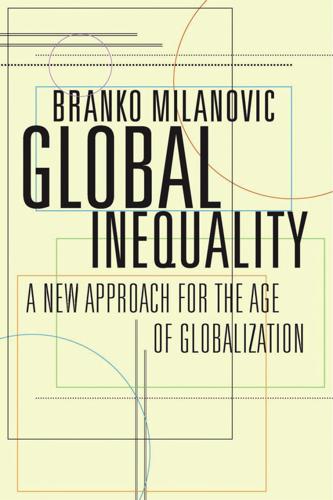
Global Inequality: A New Approach for the Age of Globalization
by
Branko Milanovic
Published 10 Apr 2016
Chancel and Piketty (2015, 31) estimate the share of CO2 emissions made by the top 10 percent of emitters (individuals) in the world at 45 percent. That assumes an income elasticity of 0.9. 10. See http://www.federalreserve.gov/faqs/currency_12773.htm. This amount is equal to almost a third of the US cash money supply in 2015. 11. In addition, these dollars provide a significant seigniorage revenue to the United States. References Acemoglu, Daron, and James Robinson. 2012. Why Nations Fail: The Origins of Power, Prosperity, and Poverty. New York: Crown. Albaquerque Sant’Anna, André. 2015. “A Spectre Has Haunted the West: Did Socialism Discipline Income Inequality?” Unpublished ms.

The Democracy Project: A History, a Crisis, a Movement
by
David Graeber
Published 13 Aug 2012
But as economist Giovanni Arrighi, following the great French historian Fernand Braudel, has pointed out, that’s how empires have tended to work for the last five hundred years or so: they start as industrial powers, but gradually shift to “financial” powers, with the economic vitality in the banking sector.13 What this means in practice is that the empires come to be based more and more on sheer extortion—that is, unless one really wishes to believe (as so many mainstream economists seem to want us to) that the nations of the world are sending the United States their wealth, as they did to Great Britain in the 1890s, because they are dazzled by its ingenious financial instruments. Really, the United States manages to keep cheap consumer goods flowing into the country, despite the decline of its export sector, by dint of what economists like to call “seigniorage”—which is economic jargon for “the economic advantage that accrues from being the one who gets to decide what money is.” There is a reason, I think, why most economists like to ensure such matters are shrouded in jargon that most people don’t understand. The real workings of the system are almost the exact opposite of the way they are normally presented to the public.

The Trade of Queens
by
Charles Stross
Published 16 Mar 2010
The gold brick glinted in the afternoon light; she returned it to the bag hastily. "About six kilos of twenty-three-carat. It was worth a hell of a lot a year ago—God only knows what it's worth right now." Stuck in a deflationary cycle and a liquidity crash with a revolution on top, gold—with or without seigniorage—was enormously more valuable than it had been when it was merely what the coin of the realm was made of. The national treasury had been stripped bare to pay for the war: That was what had started the crisis. She straighted up and dusted herself down. "Job number one for Alasdair is to get someone who knows what they're doing to hide this properly.

The Future of Money
by
Bernard Lietaer
Published 28 Apr 2013
The secret of ‘modern’ money The secret of creating money is being able to persuade people to accept one's IOU (a promise to pay in the future) as a medium of exchange. Whoever manages that trick can derive an income flow from the process (e.g., the medieval goldsmiths' fees, or, today, the interest on the loan that creates the money). Such income is called 'seigniorage', a word derived from the right of the Lord of the Manor (Seignior in Old French) to impose the use of his currency on his vassals. As the nation-states became the powers-that-be, a deal was struck between the governments and the banking system. The banking system obtained the right to create money as 'legal tender' in exchange for a commitment always to provide whatever funds the government needed.

The Year 1000: When Explorers Connected the World―and Globalization Began
by
Valerie Hansen
Published 13 Apr 2020
These were called “bald dinars,” as al-Bakri explained, “because they are of pure gold without any stamp.” Kings bought these blank coins, stamped them with inscriptions, and allowed them to circulate in their realms. Their governments profited from the difference between the higher face value of the coins and the actual value of the metal, called seigniorage. The molds used to cast such gold coins have been found in the town of Tadmekka, southeast of Taghaza and the location of the earliest Arabic-language inscriptions in Africa. Archeologists haven’t yet uncovered any shipments of gold abandoned by caravans, but one site located on the Mali-Mauritania border was an abandoned caravan shipment with one ton (.9 metric ton) of brass rods and nine pounds (4 kg) of cowrie shells.

The Ascent of Money: A Financial History of the World
by
Niall Ferguson
Published 13 Nov 2007
And, in so far as it allowed countries to subordinate monetary policy to the goal of full employment, it created potential conflicts even between options 2 and 3 of the trilemma. In the late 1960s, US public sector deficits were negligible by today’s standards, but large enough to prompt complaints from France that Washington was exploiting its reserve currency status in order to collect seigniorage from America’s foreign creditors by printing dollars, much as medieval monarchs had exploited their monopoly on minting to debase the currency. The decision of the Nixon administration to sever the final link with the gold standard (by ending gold convertibility of the dollar) sounded the death knell for Bretton Woods in 1971.59 When the Arab-Israeli War and the Arab oil embargo struck in 1973, most central banks tended to accommodate the price shock with easier credit, leading to precisely the inflationary crisis that General de Gaulle’s adviser Jacques Rueff had feared.60 With currencies floating again and offshore markets like the Eurobond market flourishing, the 1970s saw a revival of non-governmental capital export.

Blockchain Revolution: How the Technology Behind Bitcoin Is Changing Money, Business, and the World
by
Don Tapscott
and
Alex Tapscott
Published 9 May 2016
He understood that, for people in developing economies, the situation was worse. When corrupt or incompetent bureaucrats in failed states need funding to run the government, their central banks and treasuries simply print more currency and then profit from the difference between the cost of manufacturing and the face value of the currency. That’s seigniorage. The increase in the money supply debases the currency. If the local economy really tanked—as it did in Argentina and Uruguay, and more recently in Cyprus and Greece—these central bodies could freeze the bank assets of whoever couldn’t afford a bribe. Given such a possibility, the wealthy could store their assets in more trustworthy jurisdictions and more stable currencies.
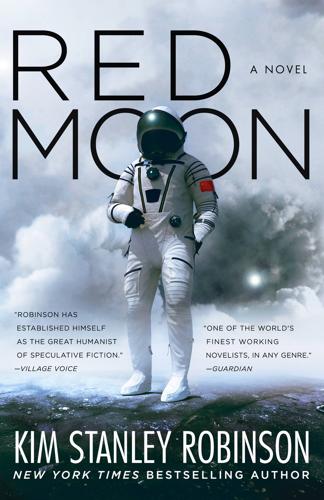
Red Moon
by
Kim Stanley Robinson
Published 22 Oct 2018
On the contrary, every sector of world finance seemed to be suffering except for the cryptocurrency called carboncoin, which was some kind of money created by a confirmable history of carbon drawdown or equivalent environmental actions, valid for subsistence spending only. What this virtual currency would come to in the real world no one could know, and the fact that millions of people had withdrawn their savings from normal seigniorage currencies to invest in such a murky new form of money, meaning, in the end, value and trust and exchangeability, was just another frightening destabilization to add to all the rest. That the millions of backers of this new currency were also demanding blockchain governance only added to the worries of people in power everywhere.

Adam Smith: Father of Economics
by
Jesse Norman
Published 30 Jun 2018
It was a work of so much expectation, by yourself, by your friends, and by your public, that I trembled for its appearance; but am now much relieved… it has depth and solidity and acuteness, and is so much illustrated by curious facts, that it must at last take the public attention.’ Yet Hume was far too fastidious not to mention several areas of friendly disagreement in passing as well, in relation to the prices of produce, seigniorage—the profits made by a government on the issuance of currency—‘and a hundred other points… fit only to be discussed in conversation’. Hugh Blair wrote at greater length two days later: ‘I expected much, yet I confess you have exceeded my expectations. One writer after another on these subjects did nothing but puzzle me.
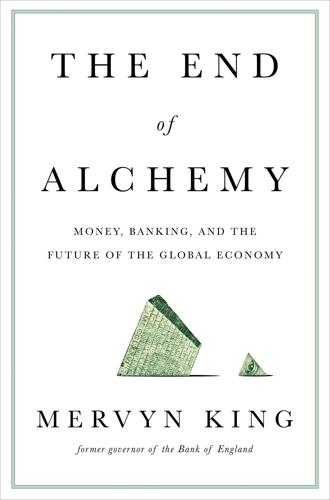
The End of Alchemy: Money, Banking and the Future of the Global Economy
by
Mervyn King
Published 3 Mar 2016
In economic terms, therefore, a bank would be in effect a combination of a narrow bank and a wide bank, with no ability to mix the financing of safe and risky assets. 19 The advantage claimed by Benes and Kumhof (2012) that government debt and interest would be sharply reduced relies heavily on the assumption that seigniorage income (the profit derived from printing money) would rise because the central bank would not pay interest on reserves. That is unlikely to be sustainable if public money is to survive on the same scale as private money at present, and paying interest on reserves is a feature of a growing number of central banks for purposes of monetary management. 20 Fisher (1936b), p. 15. 21 See the discussion in Holmstrom (2015). 22 Geithner (2014), p. 508. 23 Sedgwick (1840), pp. 104–5. 24 Bulow and Klemperer (2013, 2015) have been thinking about the use of collateral in the context of reforming the capital regulation of banks and the allocation of losses when banks fail. 25 Such assets could not also be used as collateral with other creditors. 26 A more sophisticated, albeit more complicated, measure of effective liquid liabilities would be to weight liabilities by their remaining duration.
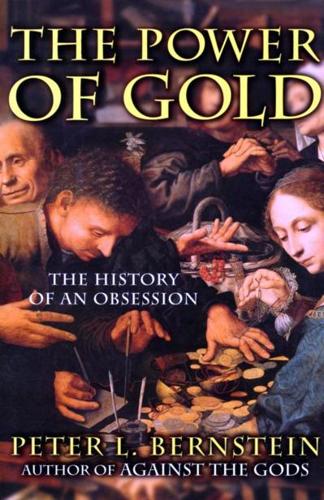
The Power of Gold: The History of an Obsession
by
Peter L. Bernstein
Published 1 Jan 2000
Bloomfield, Arthur, 1959. Monetary Policy Under the Gold Standard, 1800-1914. Federal Reserve Bank of New York. Bonar, J., 1923. "Ricardo's Ingot Plan." Economic Journal, XXXIII, pp. 281-304. Boorstin, Daniel, ed., 1966. An American Primer. New York: Penguin Books. Bordo, Michael, 1986. "Money, Deflation and Seigniorage in the Fifteenth Century: A Review Essay." Journal of Monetary Economics, 18, no. 3, pp. 337-346. Bordo, Michael, and Tamim Bayoumi, 1999. "Getting Pegged: Comparing the 1879 and 1925 Gold Resumptions." Cambridge, MA: National Bureau of Economic Research, Working Paper 5497. Bordo, Michael, and Forrest Capie, eds., 1993.
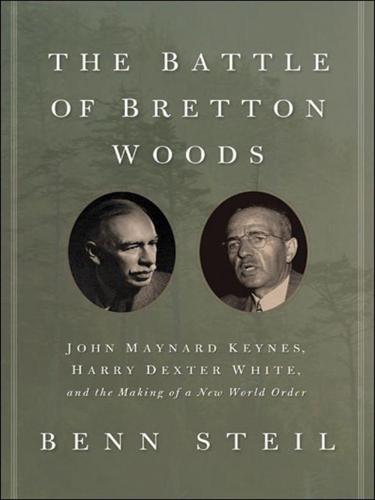
The Battle of Bretton Woods: John Maynard Keynes, Harry Dexter White, and the Making of a New World Order
by
Benn Steil
Published 14 May 2013
The issuer of a currency considered as good as gold would potentially reap enormous benefits. Other countries would naturally want to hold vast reserves of such a currency in order to settle international payments and to act as a buffer against unforeseen financial difficulties. The issuer would, in contrast, need minimal foreign exchange reserves. It would earn “seigniorage” profits from the interest on the assets it received in return for its non-interest-bearing currency. It could, within limits, persistently buy more from abroad than it sold by simply printing money. Its firms would not suffer foreign exchange risk on the vast bulk of its trade. And finally there would be the nonquantifiable prestige associated with minting global money.
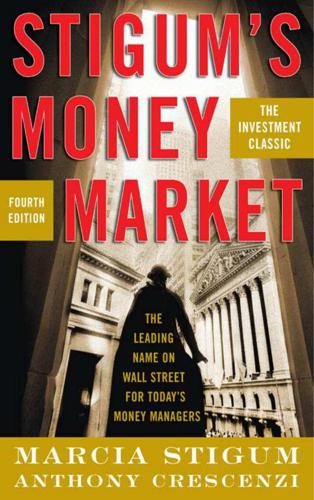
Stigum's Money Market, 4E
by
Marcia Stigum
and
Anthony Crescenzi
Published 9 Feb 2007
This meant that U.S. banks would be willing to pay 60 basis points more for funds borrowed abroad (usually from London) to finance lending there. McCauley (2005) asserts that, “In effect, London and other offshore centers allowed central banks to avoid paying the small amount of seigniorage earned by the U.S. public sector on reservable dollar deposits. Most of the seigniorage earnings from non-residents then (and almost all of them now), however, arose from foreign holdings of U.S. banknotes, which were almost entirely in private hands.” With the yield advantage on Eurodollar deposits lasting for such a protracted period, the Eurodollar market grew sharply.
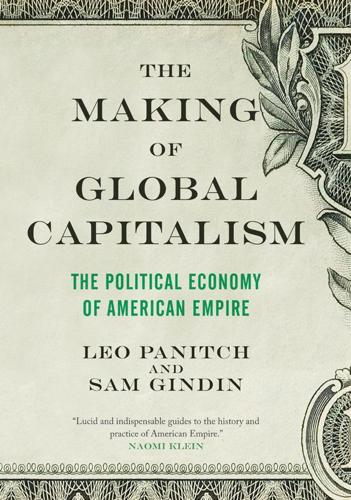
The Making of Global Capitalism
by
Leo Panitch
and
Sam Gindin
Published 8 Oct 2012
Gold never really served fully the purpose for which it was intended under the Bretton Woods System—regulator of liquidity, enforcer of discipline. It couldn’t because of its own rigidities, and its international monetary role has been dying from natural causes, as its domestic role did.44 The international adoption of the US dollar–Treasury bill standard gave the American state distinct ‘‘seigniorage’’ advantages, as the reward for being held responsible for securing and validating confidence in the dollar. This was all the more remarkable in that this expansion of responsibilities took place even amid Watergate—perhaps the greatest crisis of the presidency in US history.45 And the results were seen as the dollar continued rising from late 1973 to early 1975 through the most serious economic crisis since the 1930s.

Debt: The First 5,000 Years
by
David Graeber
Published 1 Jan 2010
This feature is the essence of America’s free financial ride, a tax imposed at the entire globe’s expense.13 What’s more, over time, the combined effect of low interest payments and the inflation is that these bonds actually depreciate in value—adding to the tax effect, or as I preferred to put it in the first chapter, “tribute.” Economists prefer to call it “seigniorage.” The effect, though, is that American imperial power is based on a debt that will never—can never—be repaid. Its national debt has become a promise, not just to its own people, but to the nations of the entire world, that everyone knows will not be kept. At the same time, U.S. policy was to insist that those countries relying on U.S. treasury bonds as their reserve currency behaved in exactly the opposite way as they did: observing tight money policies and scrupulously repaying their debts.